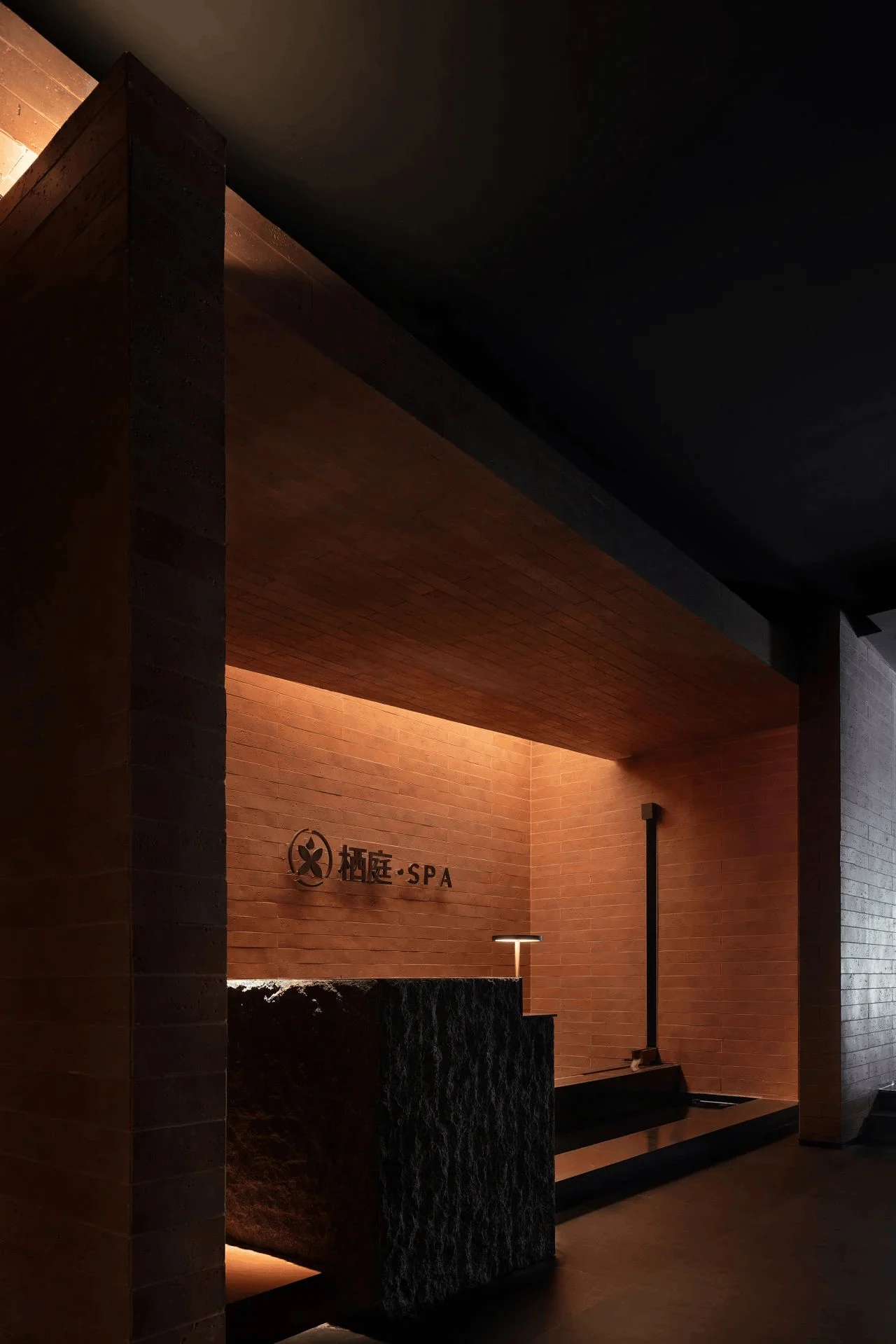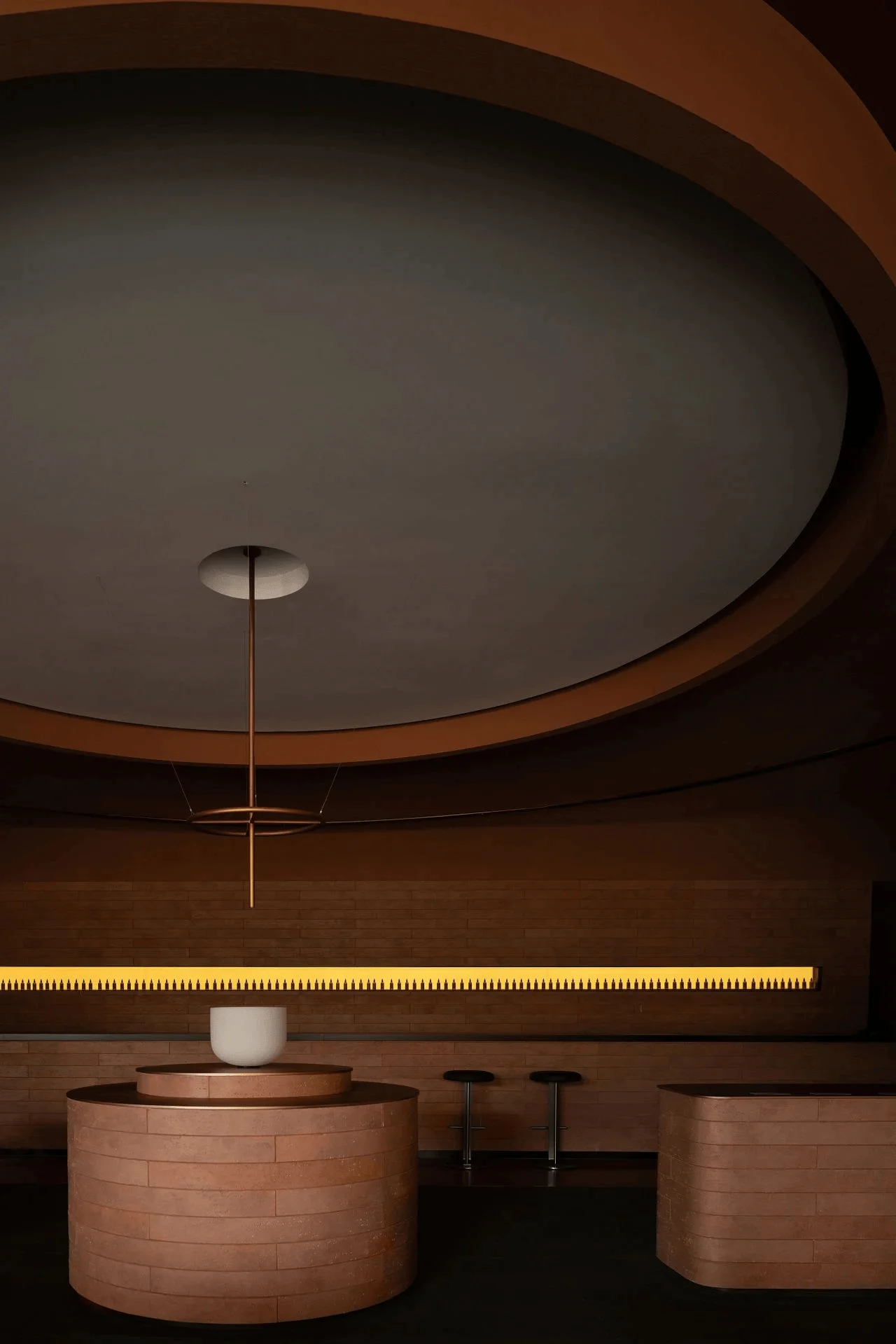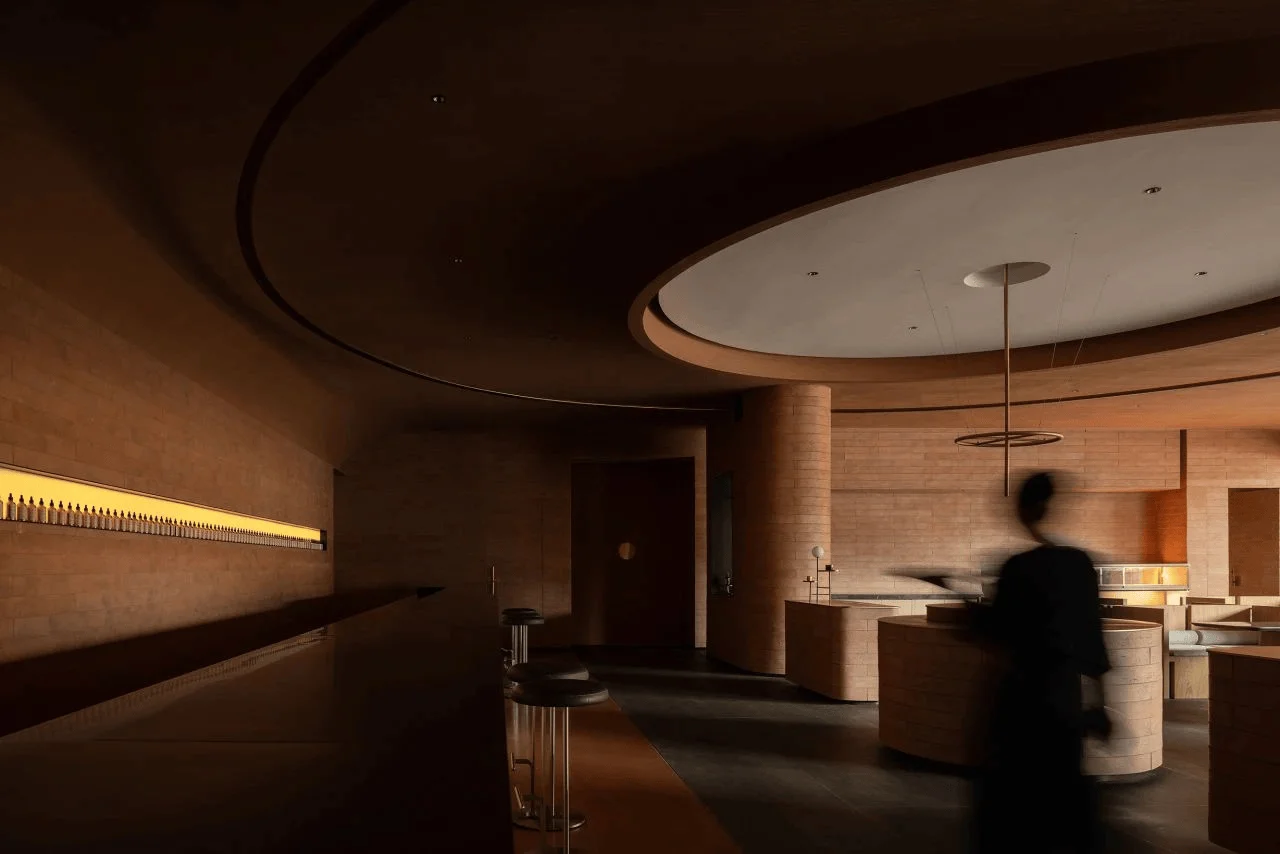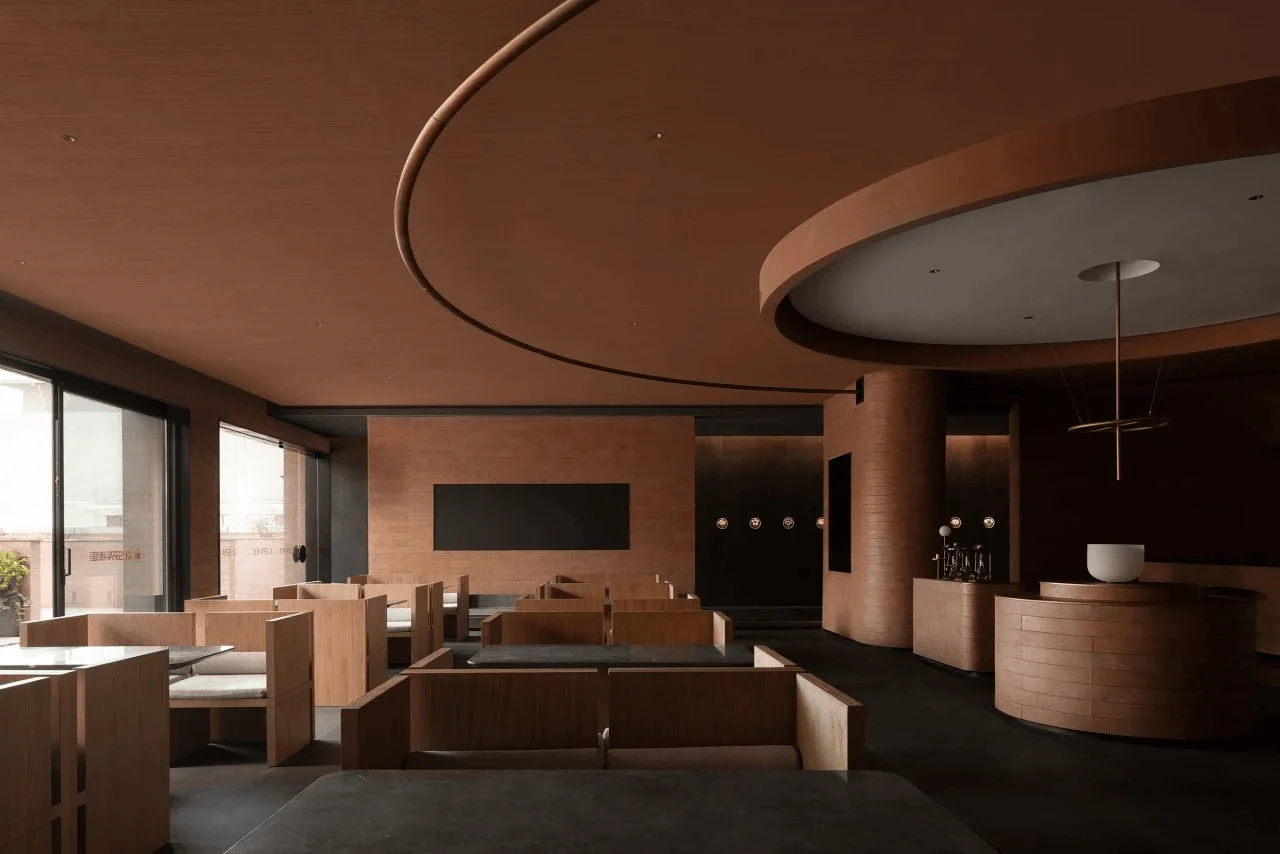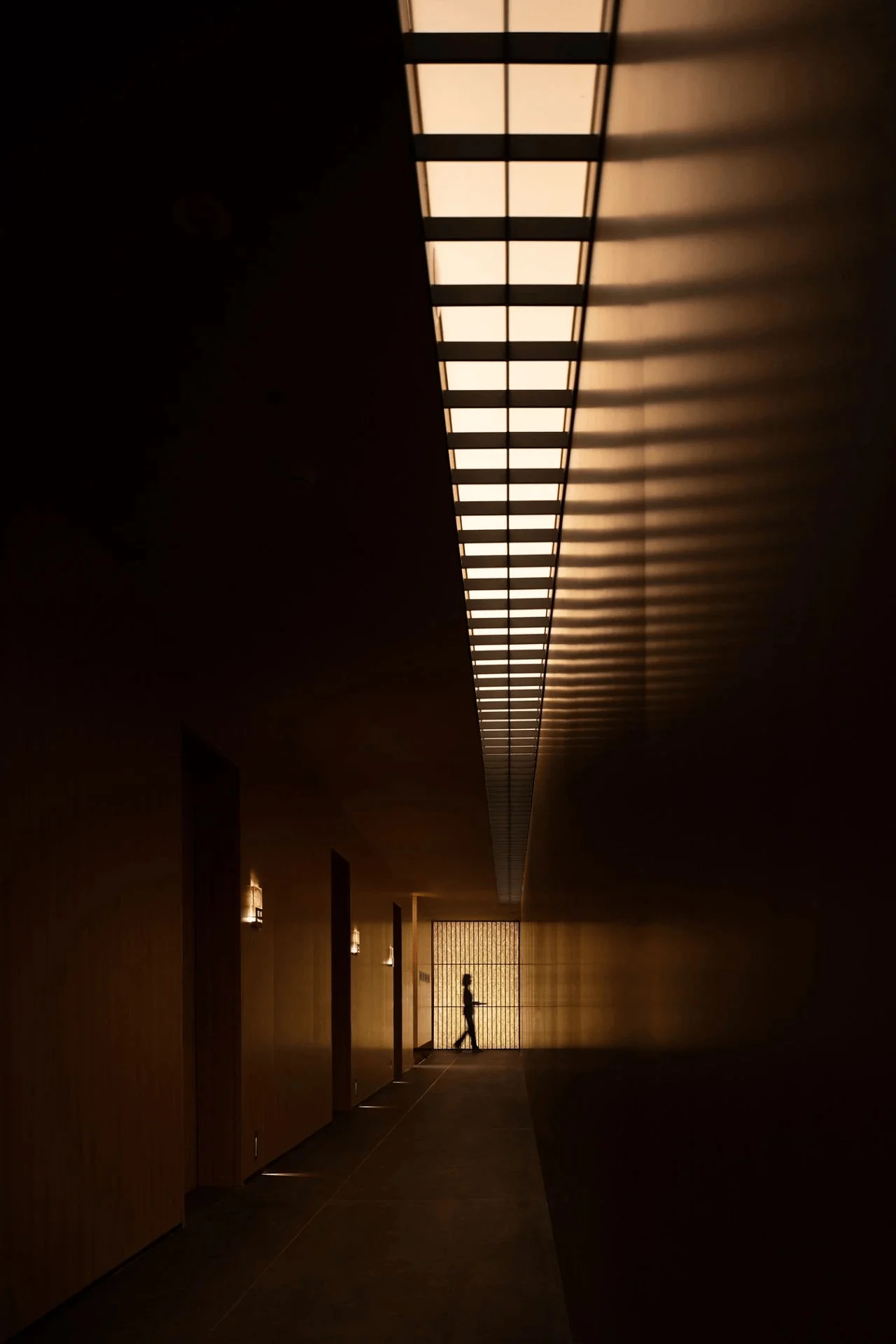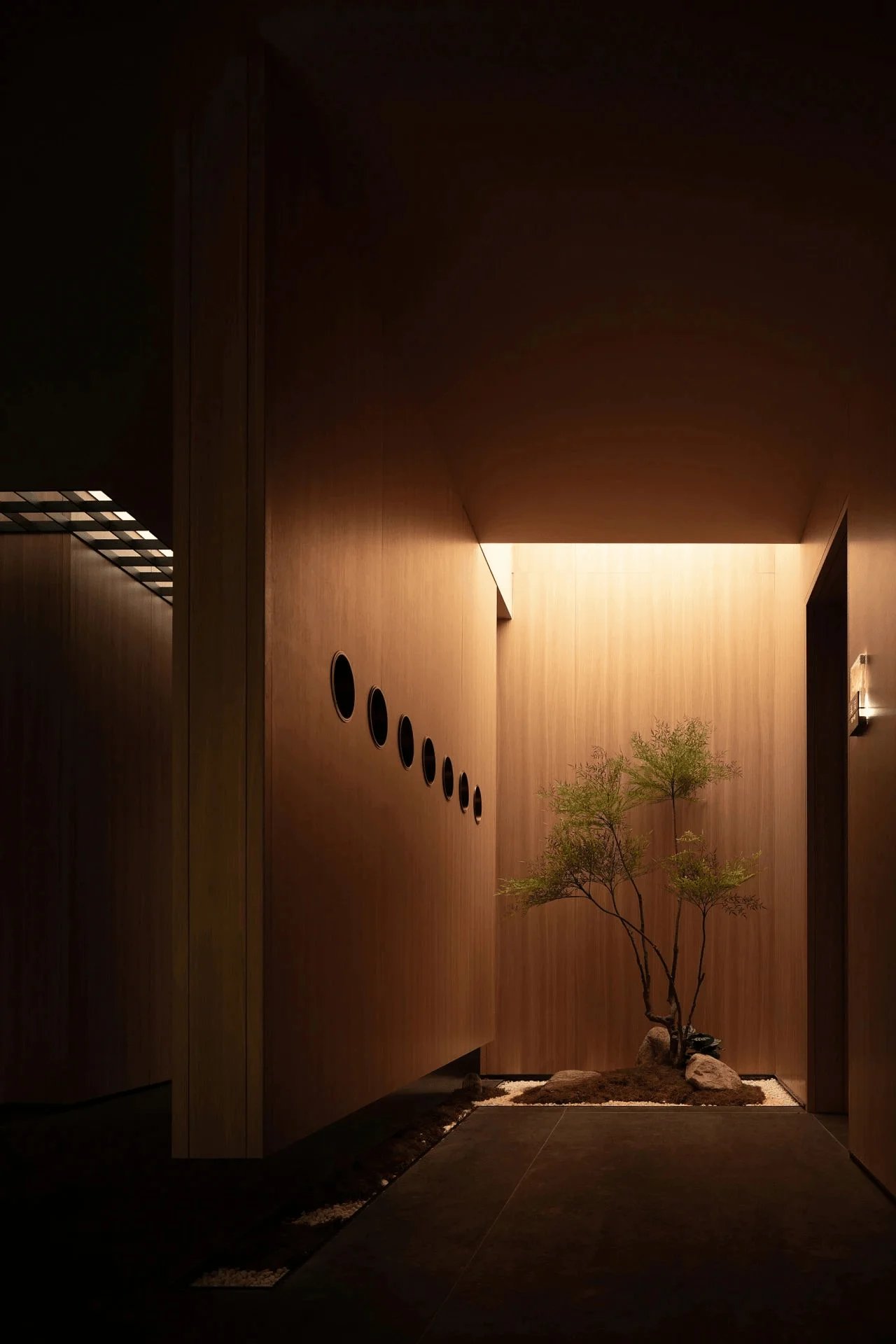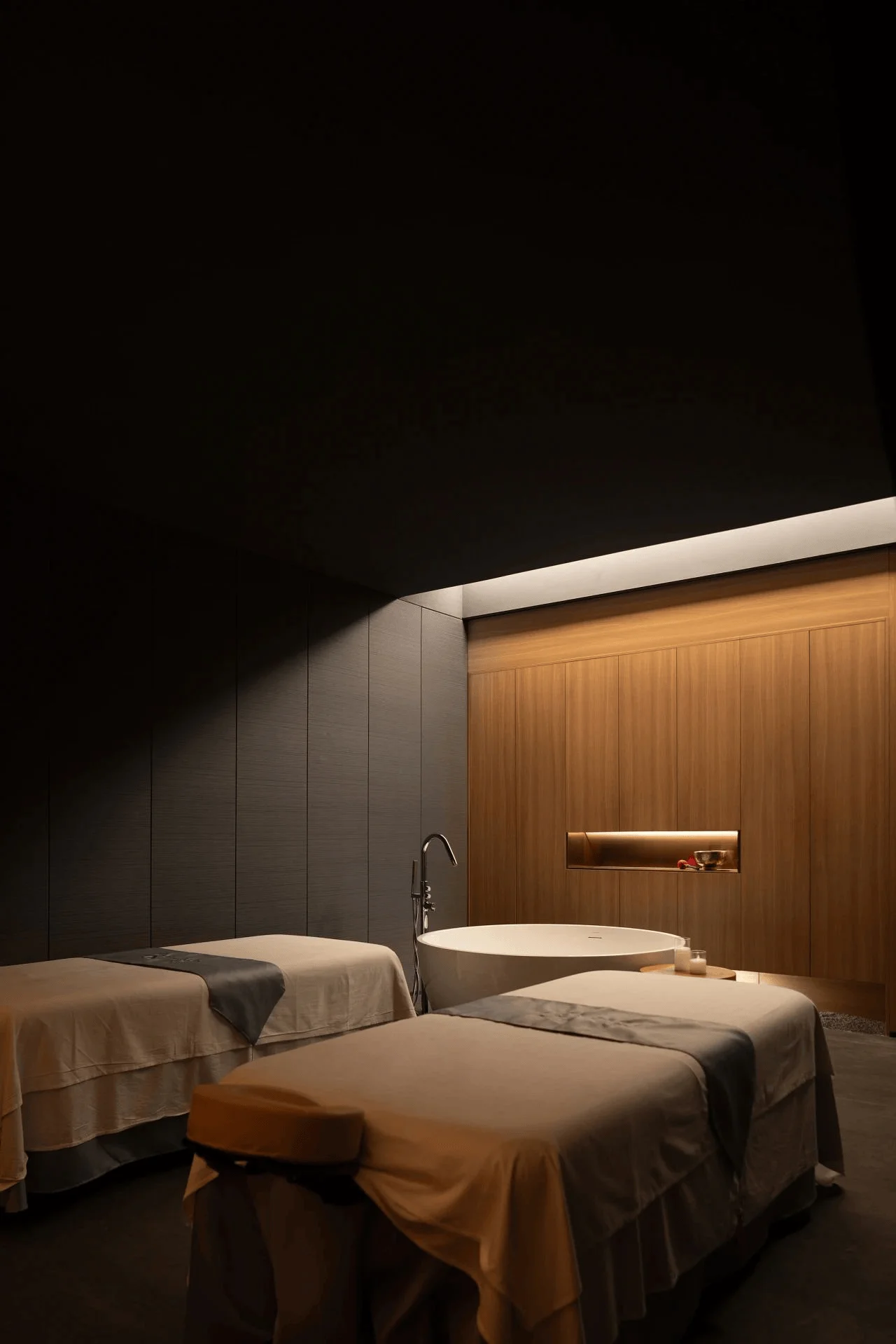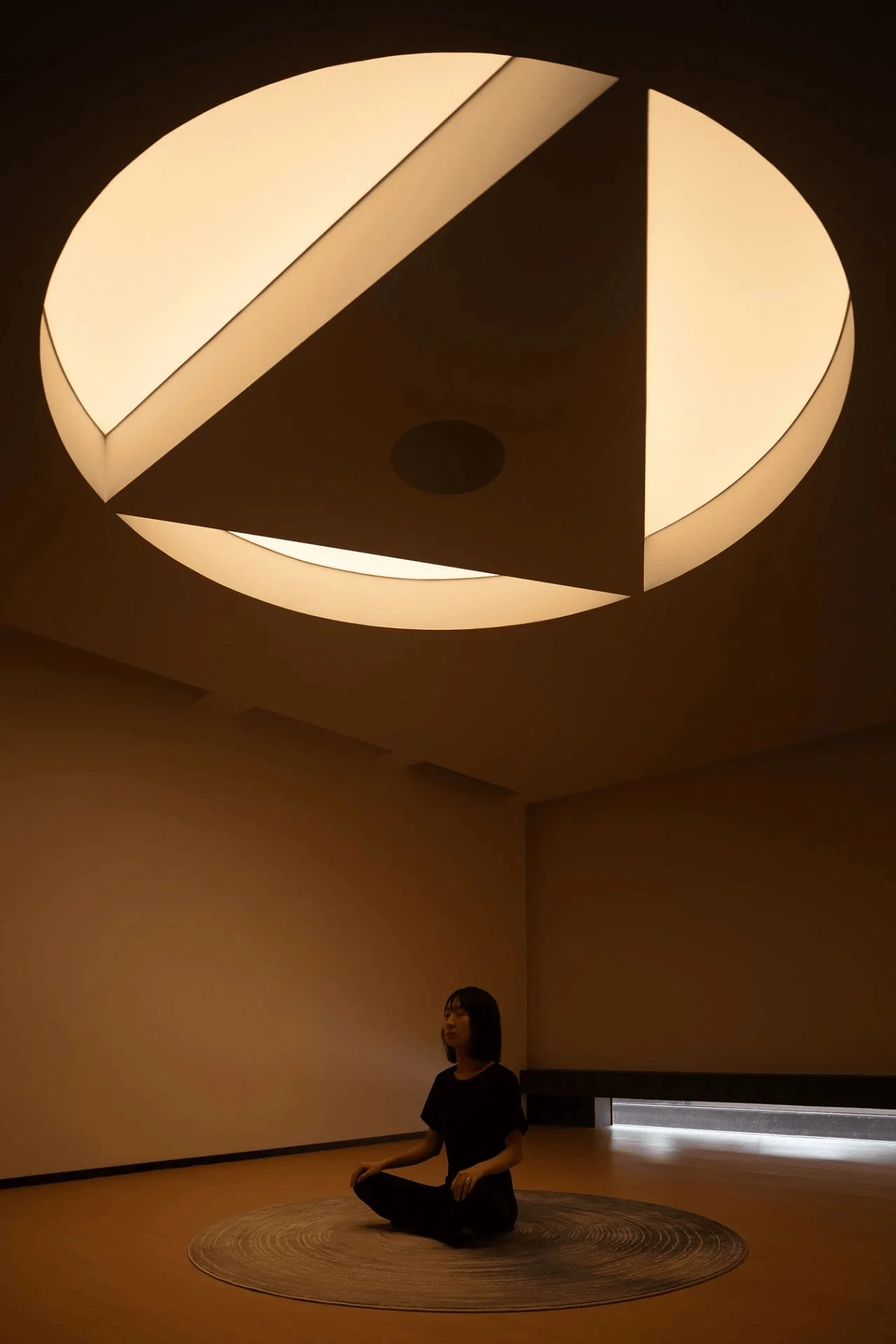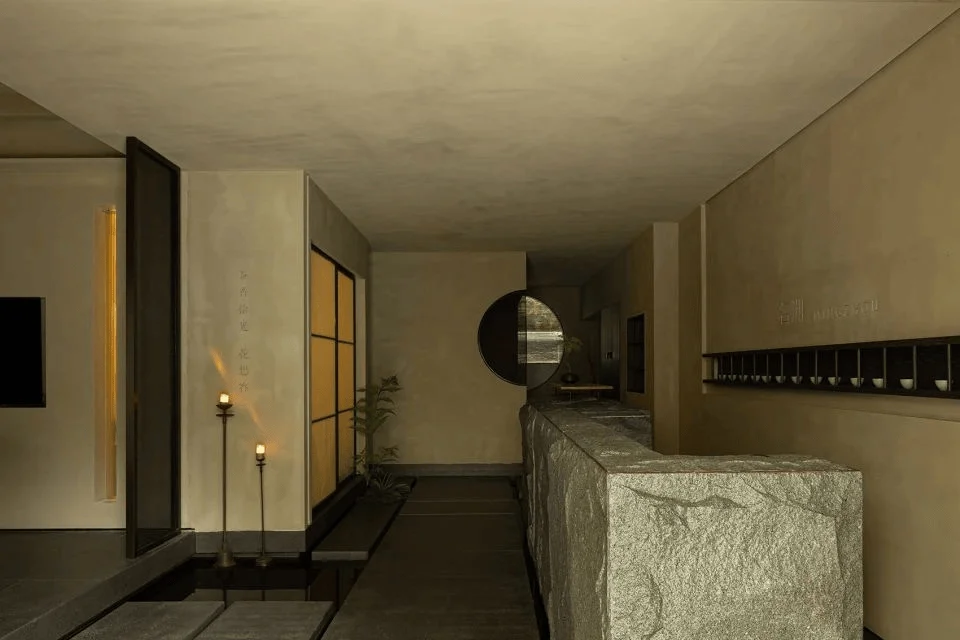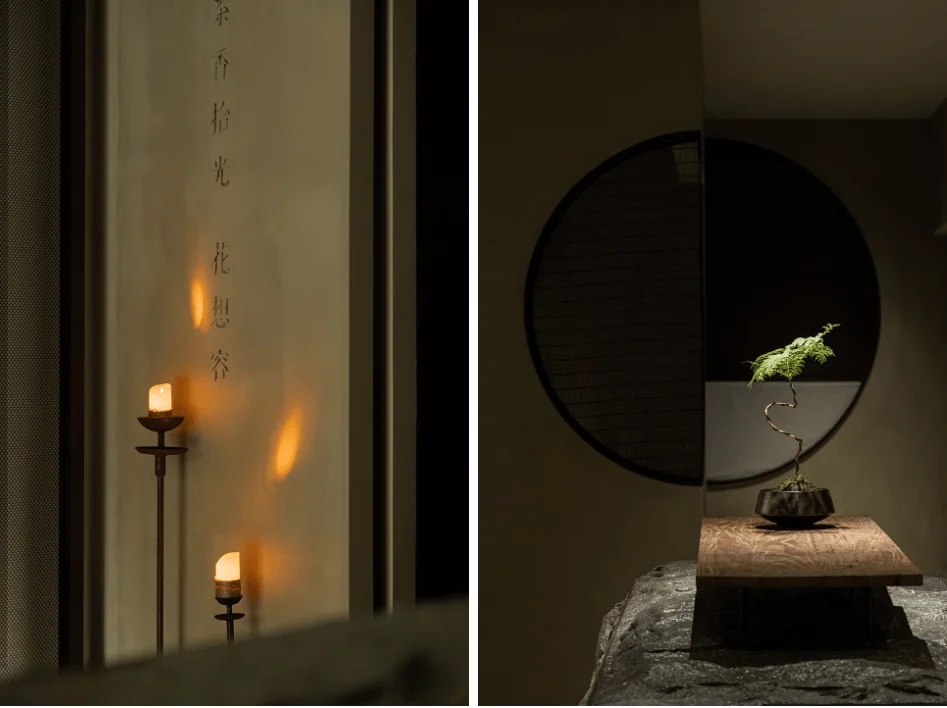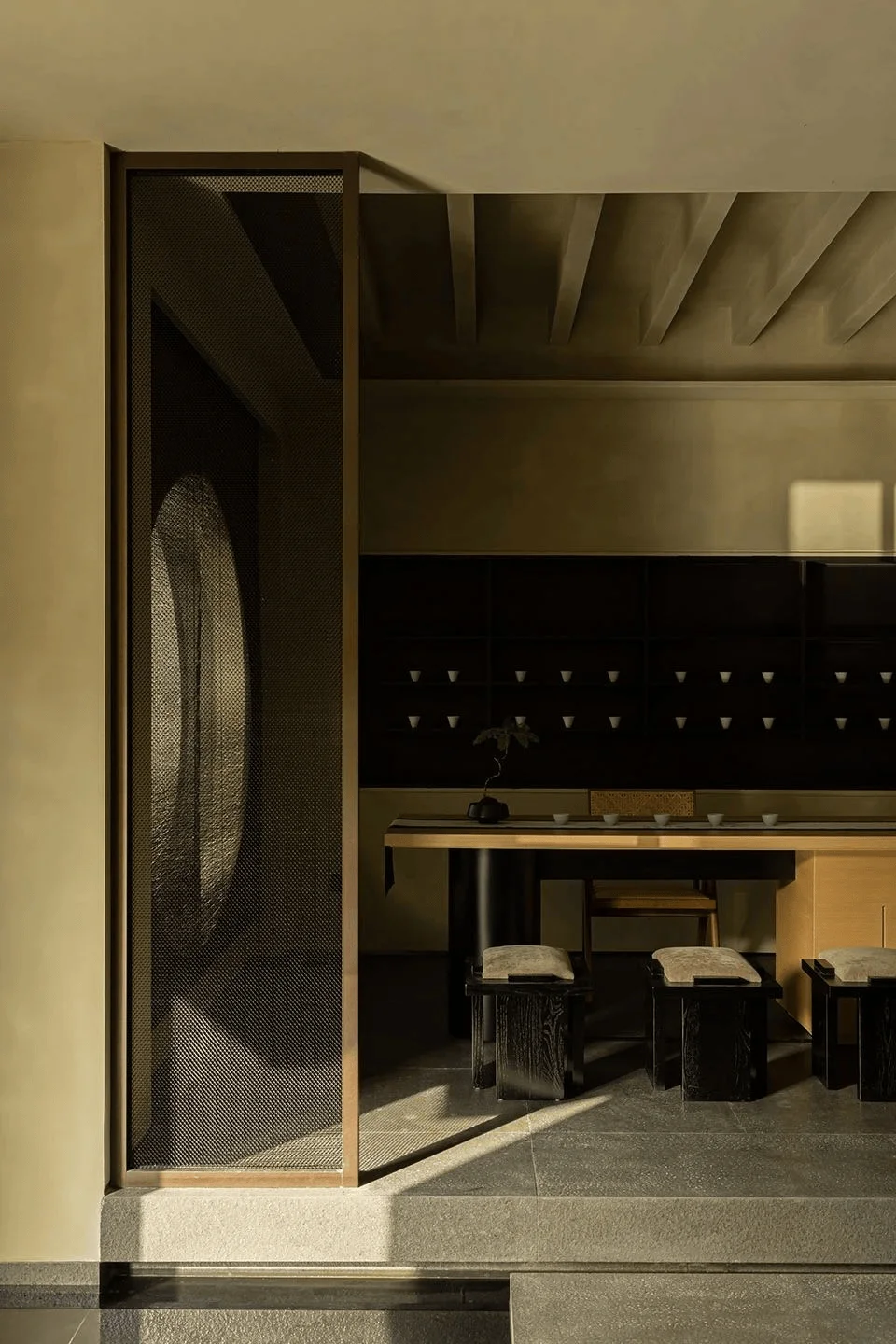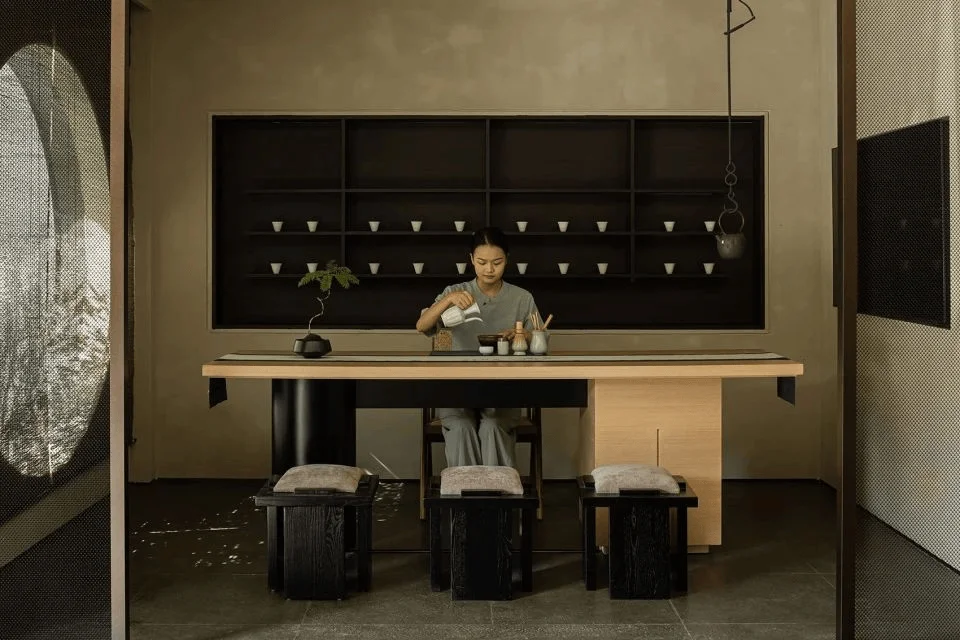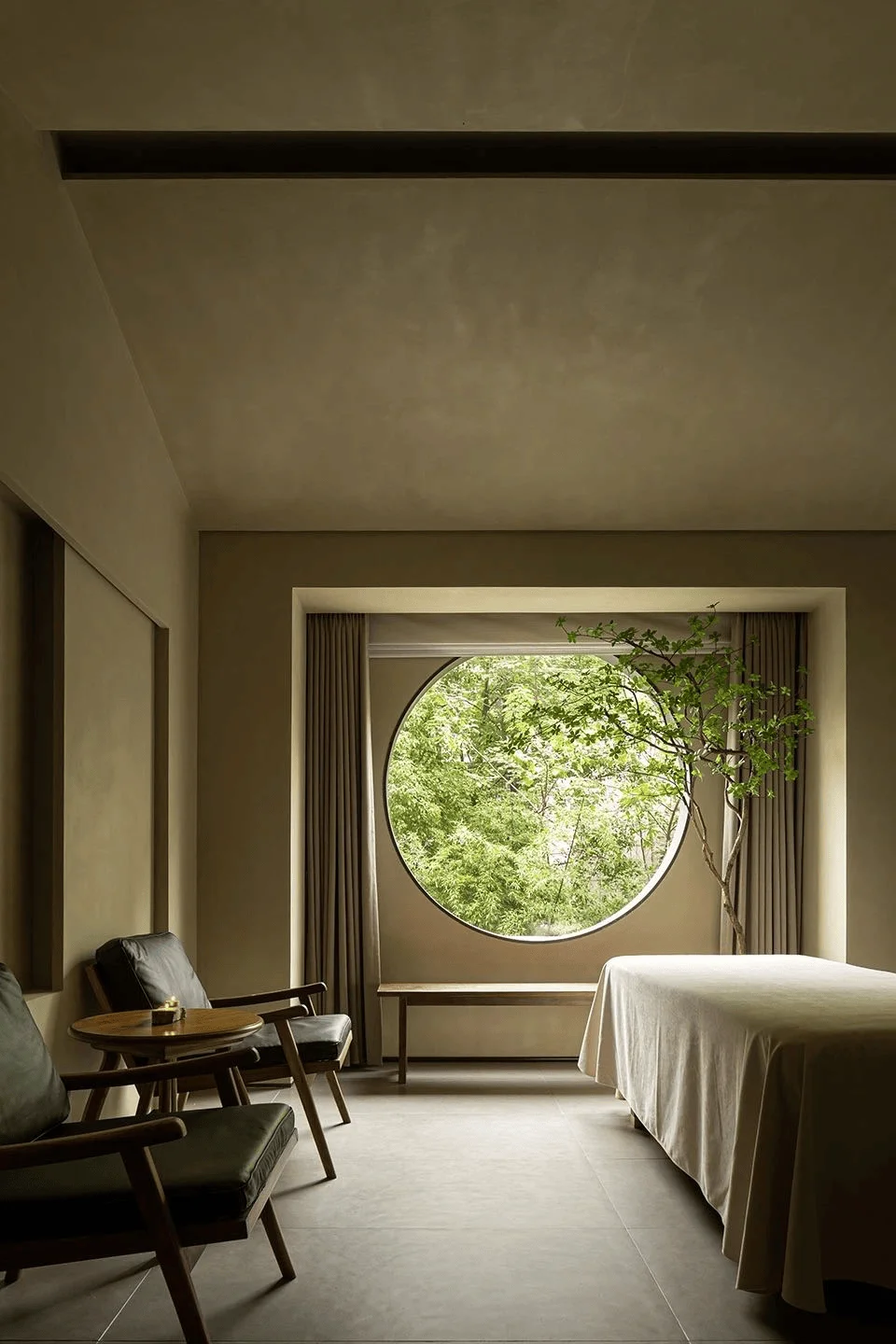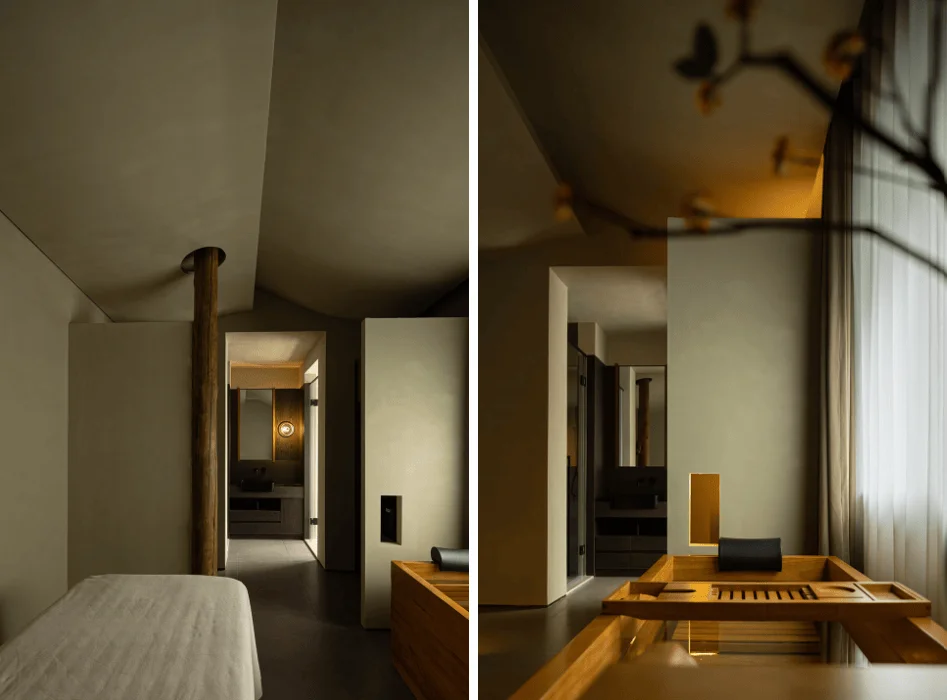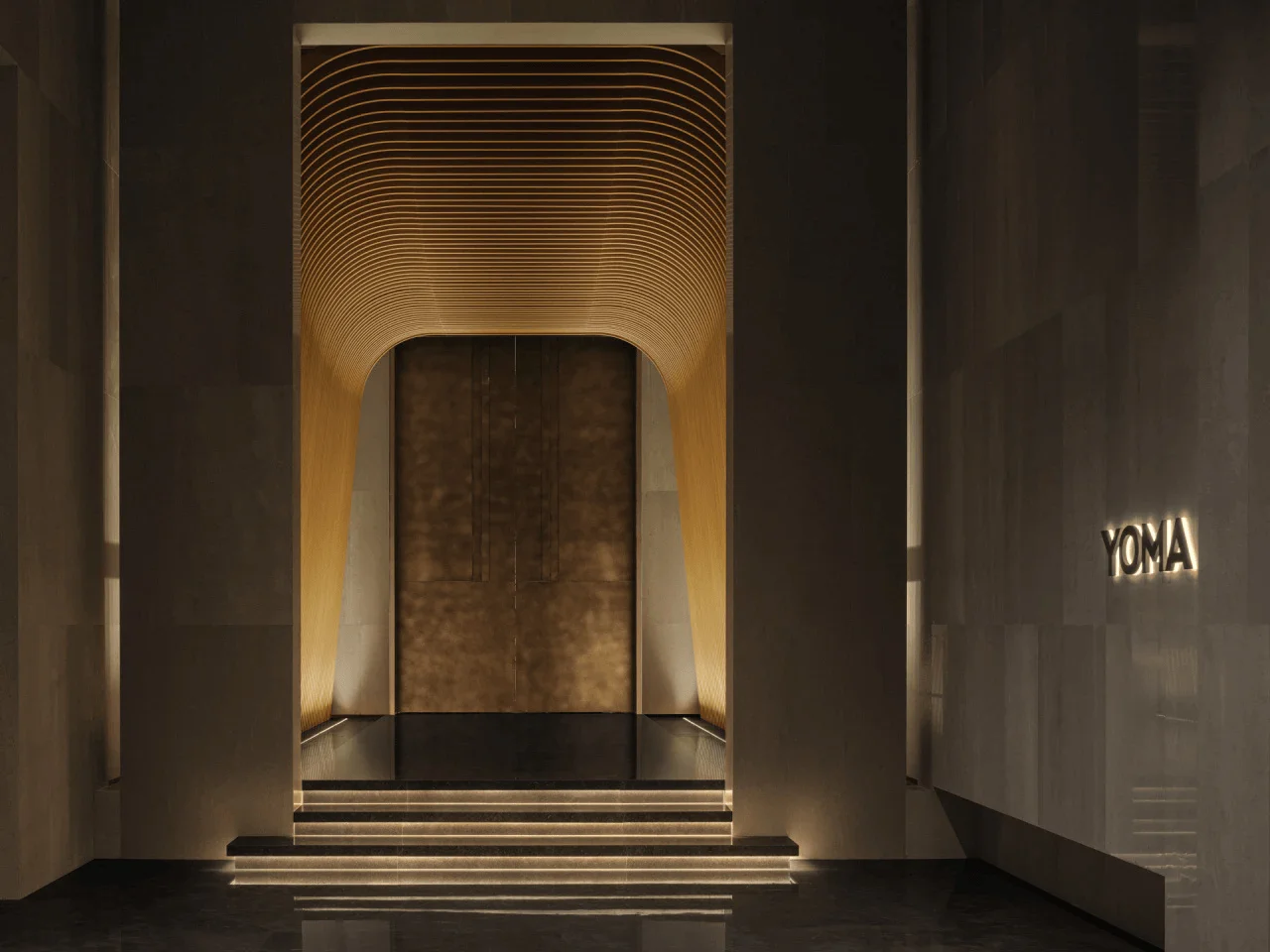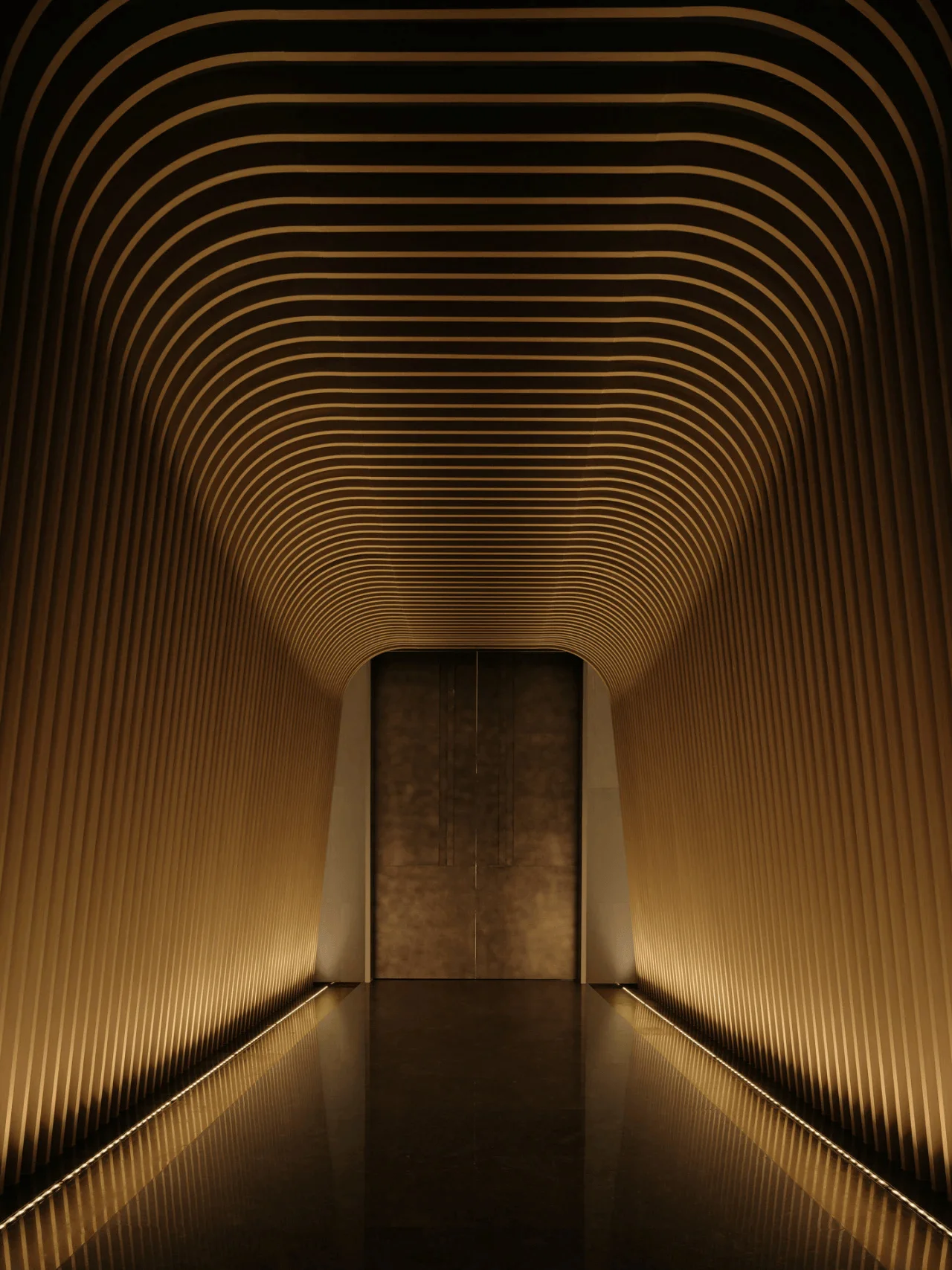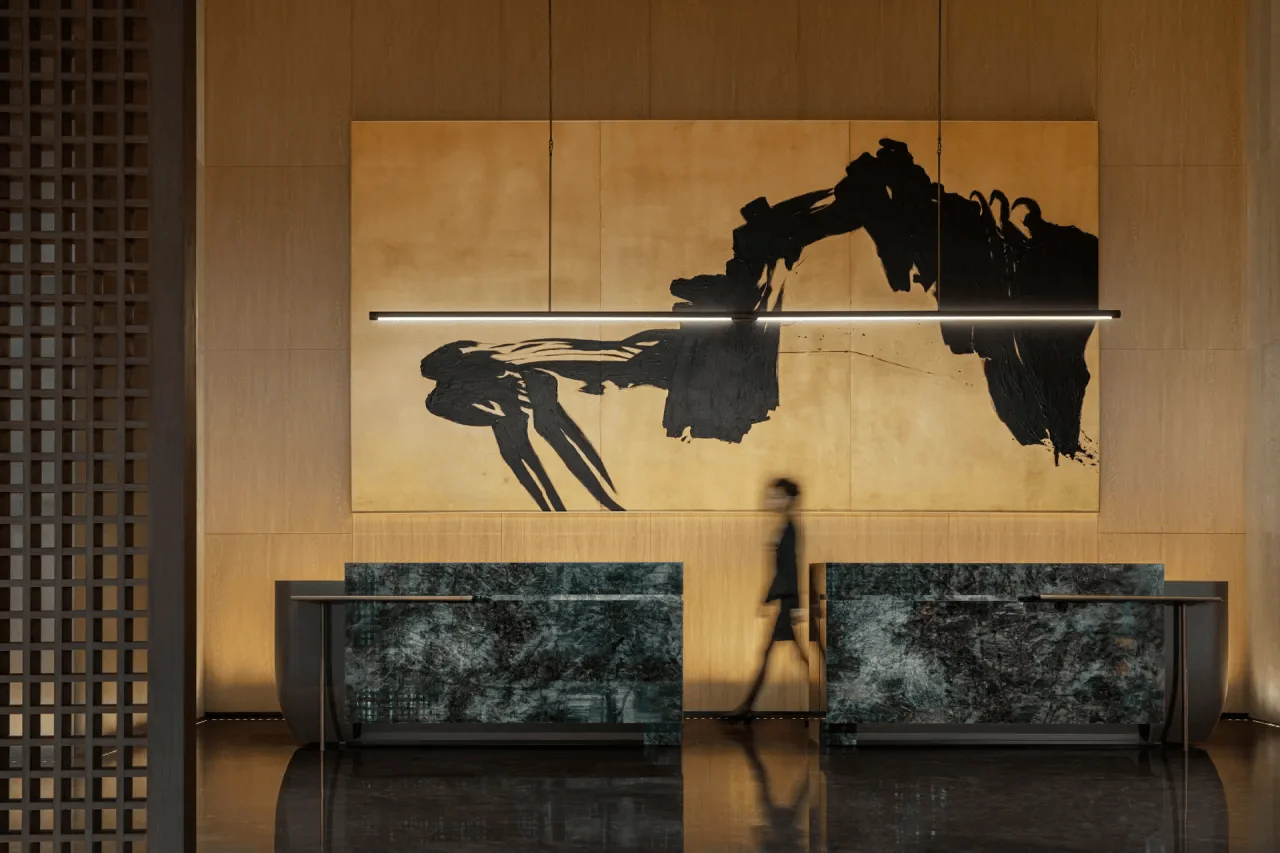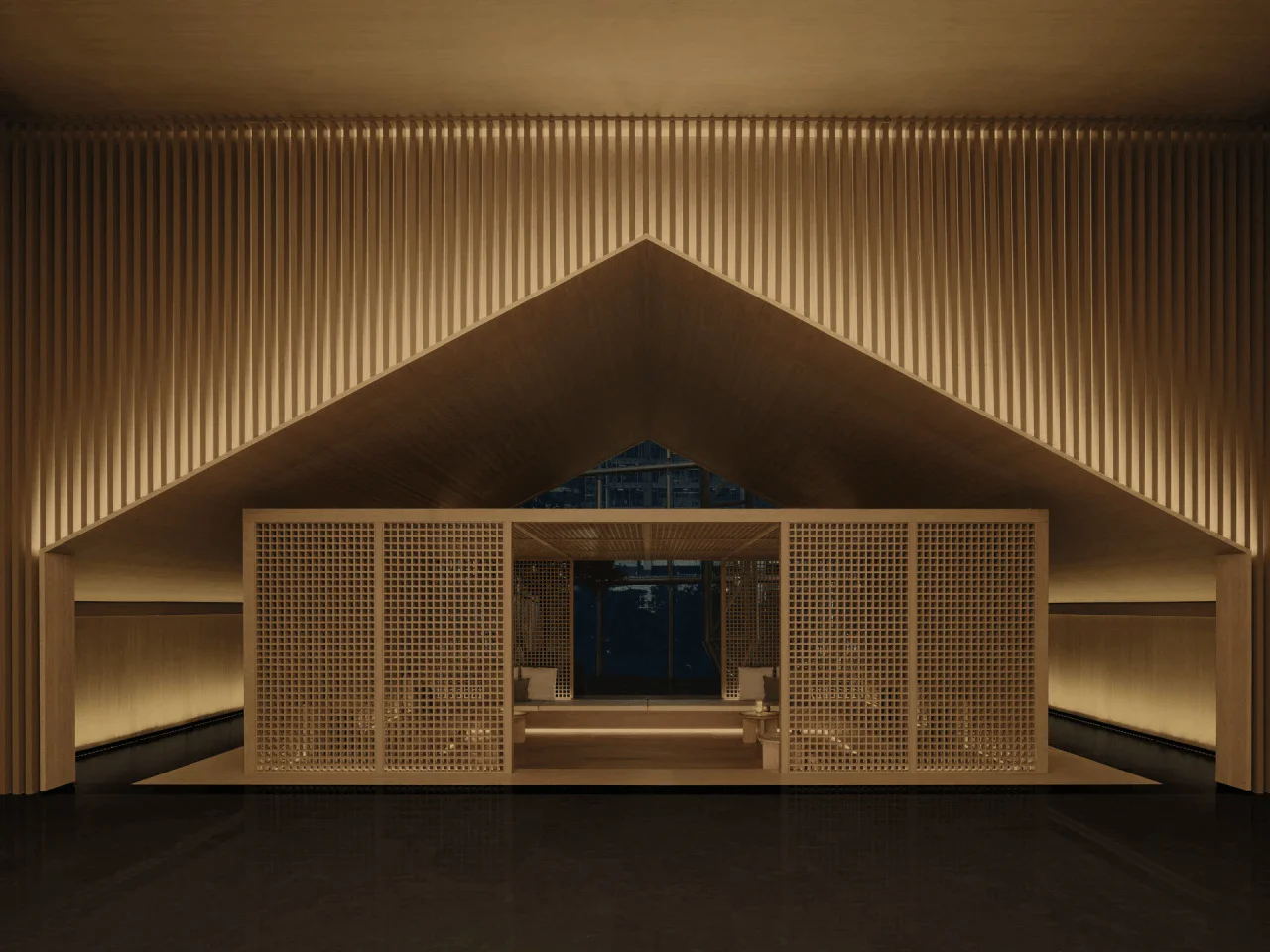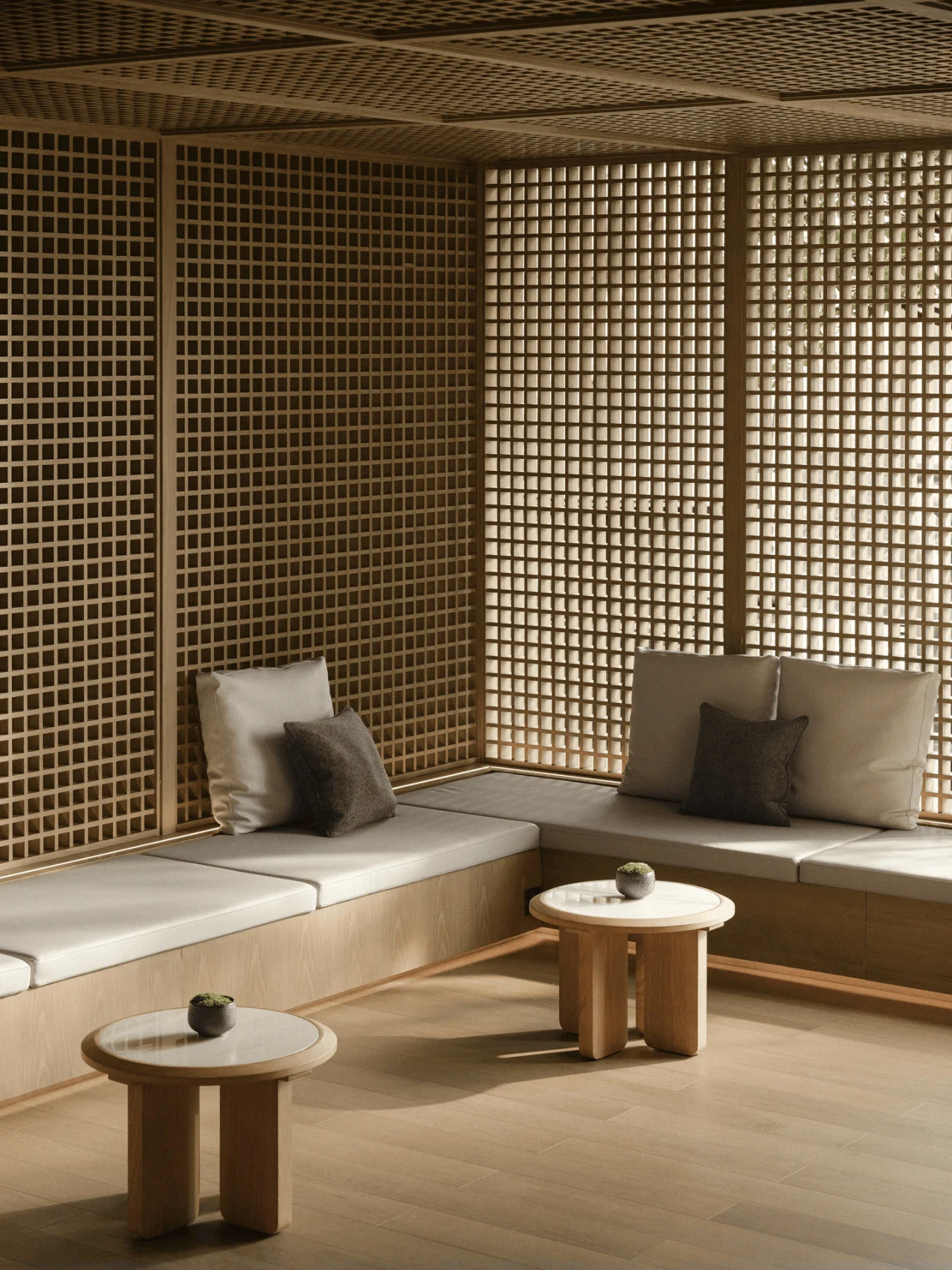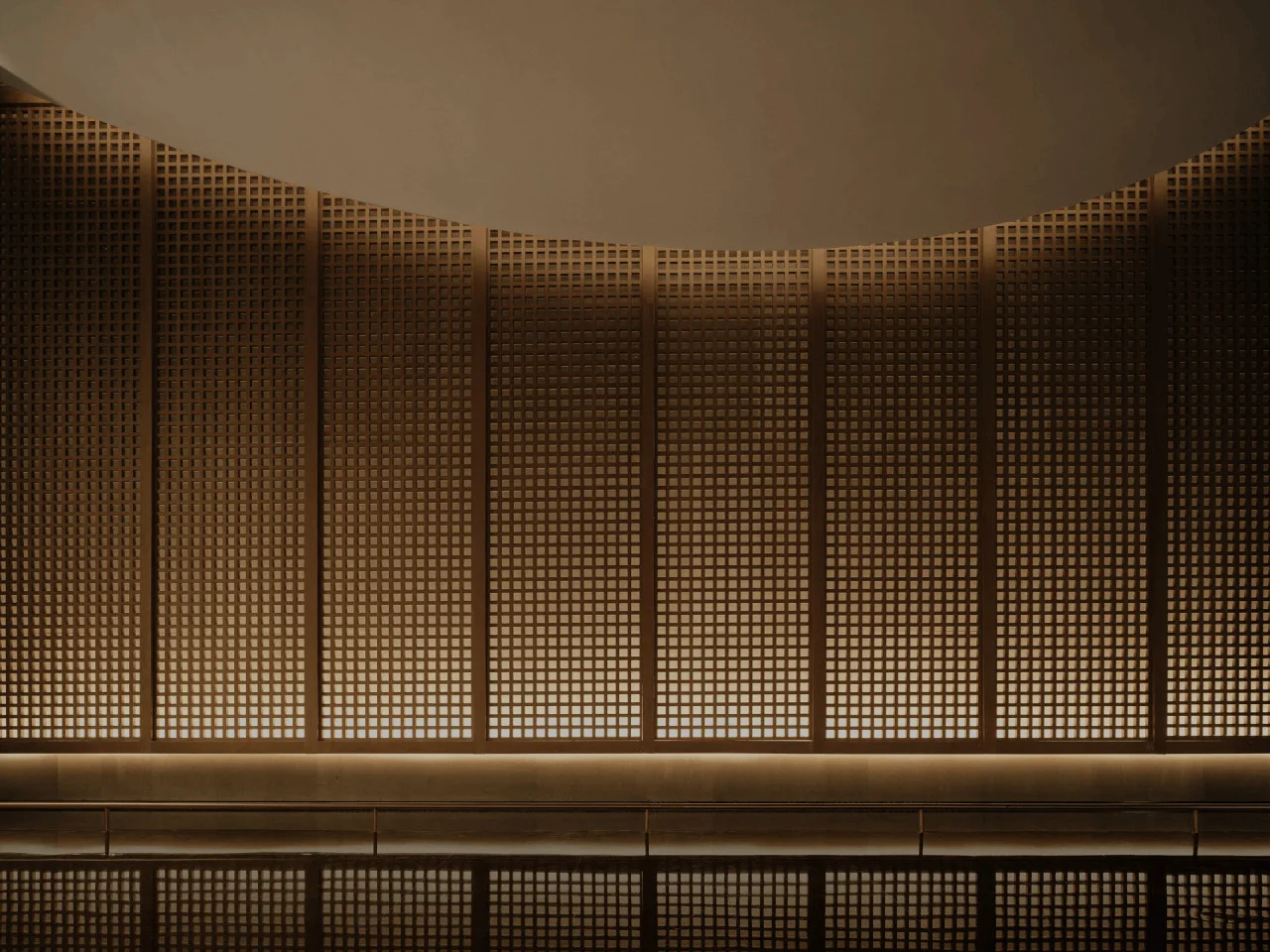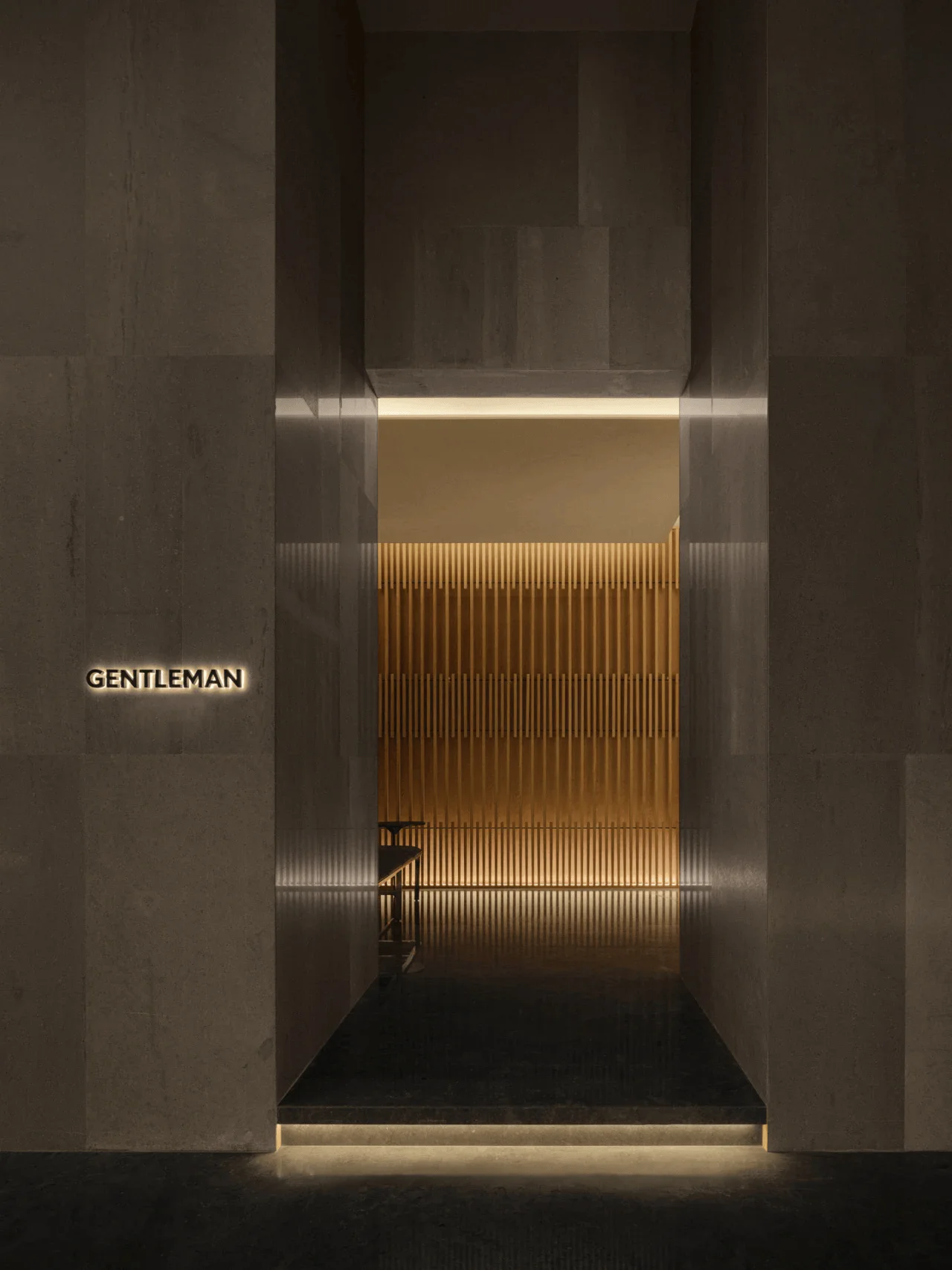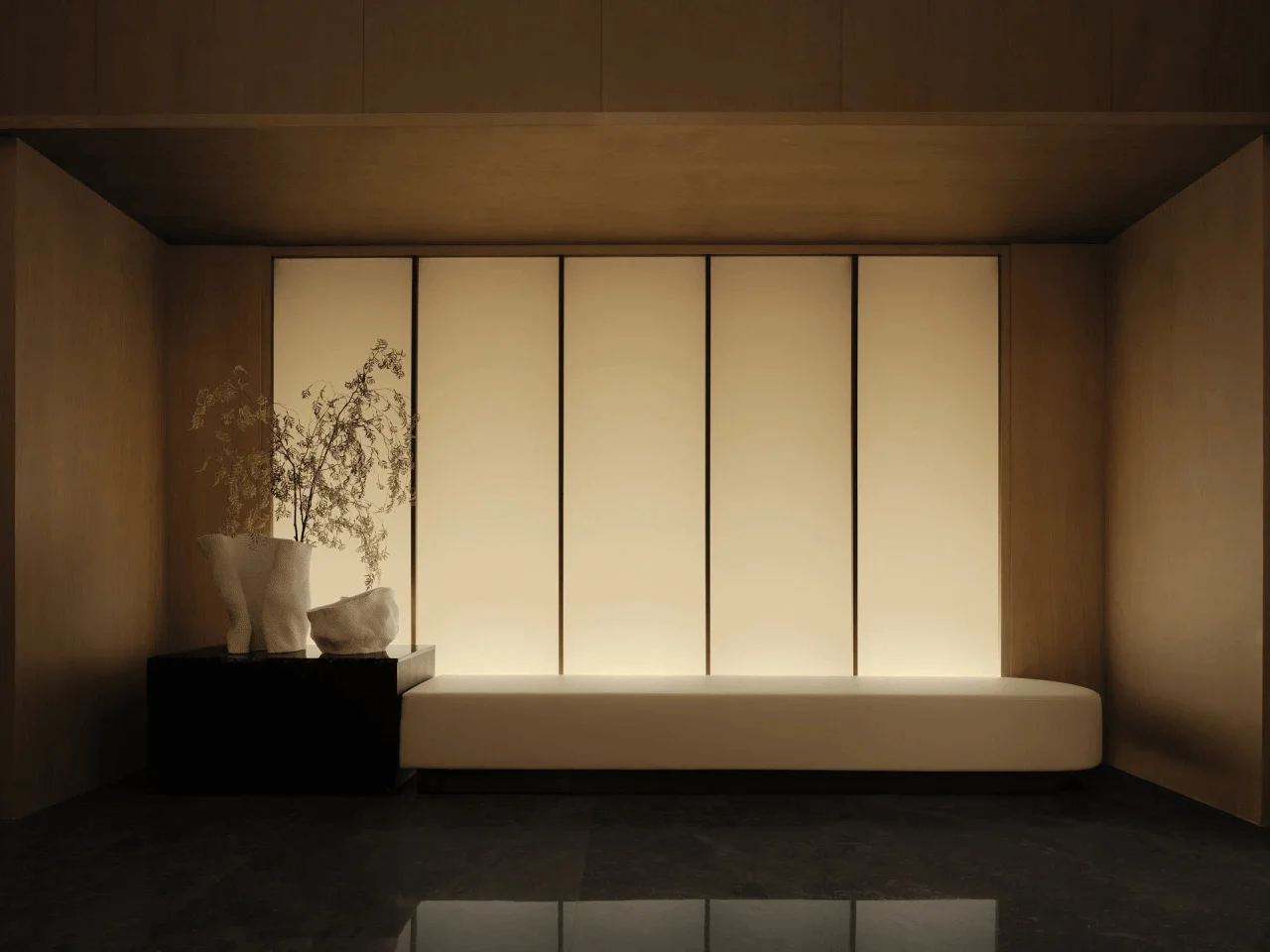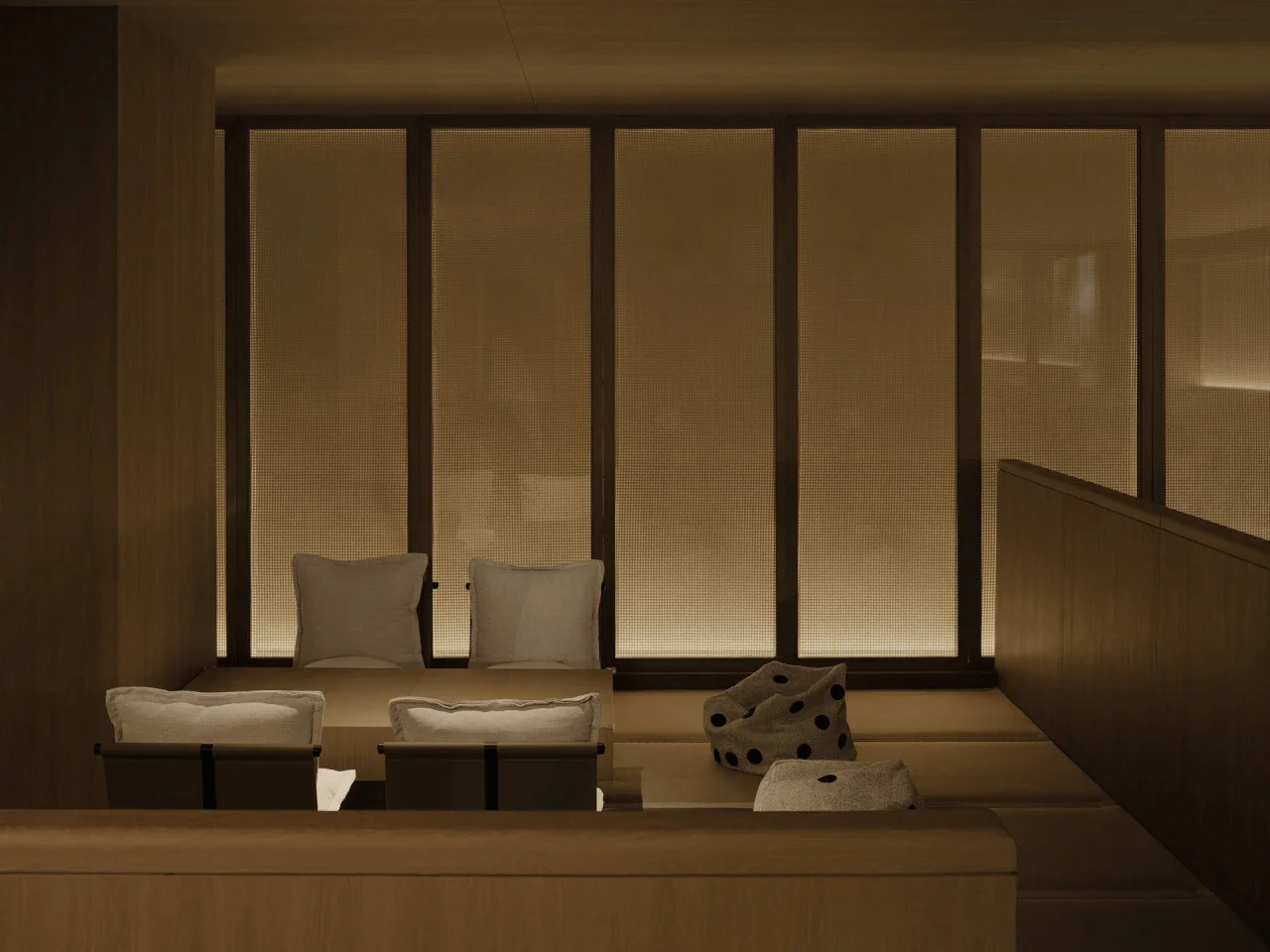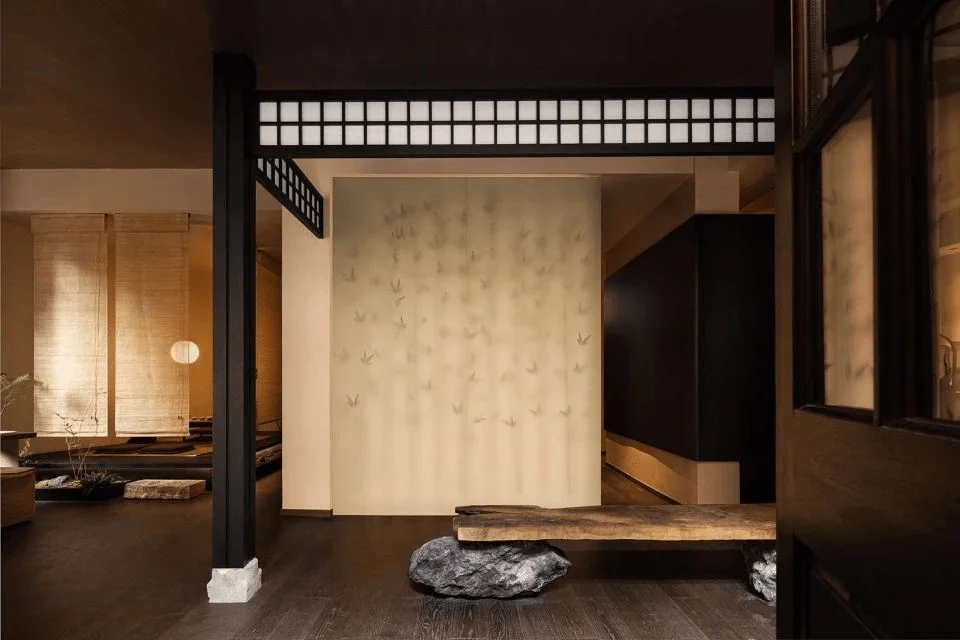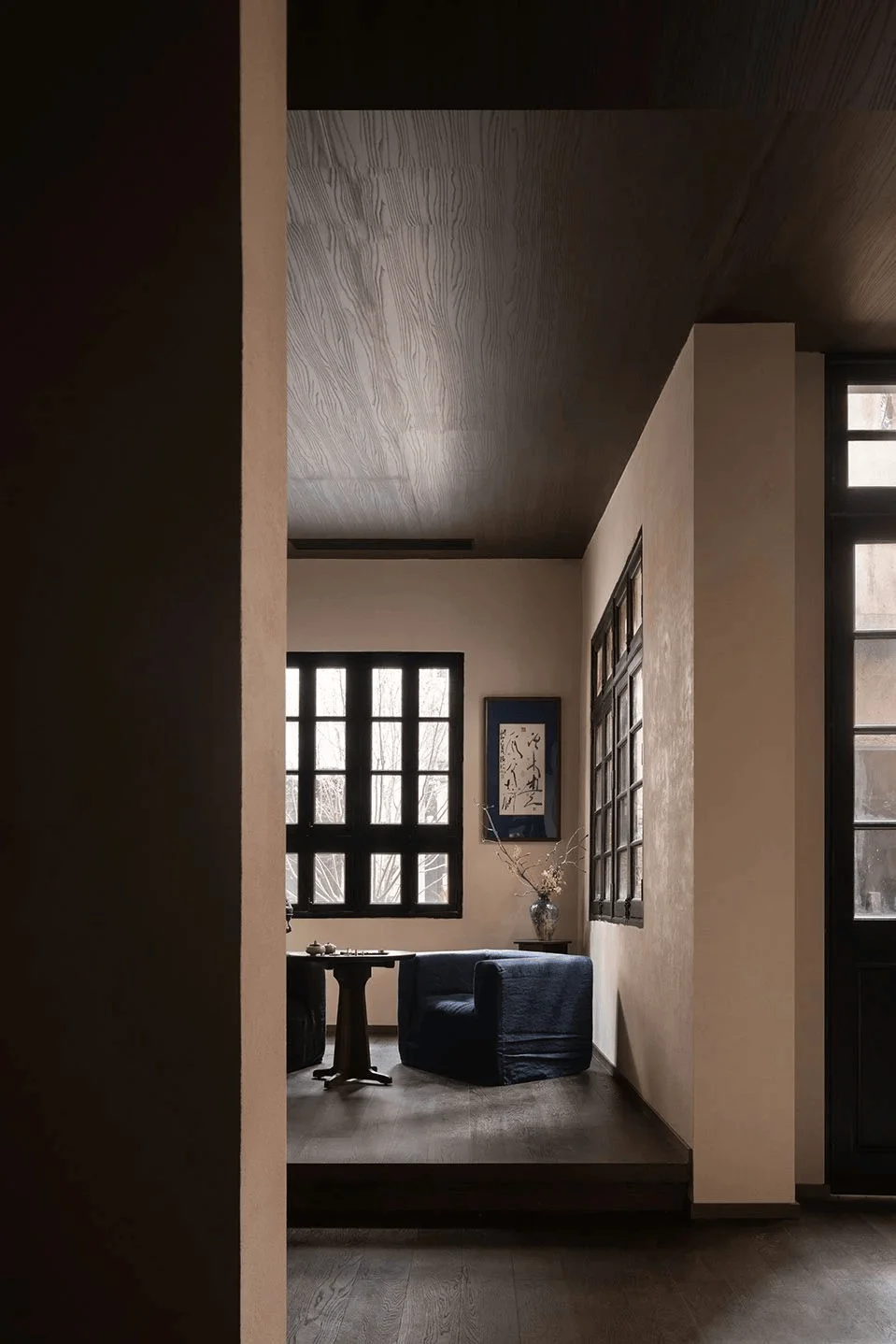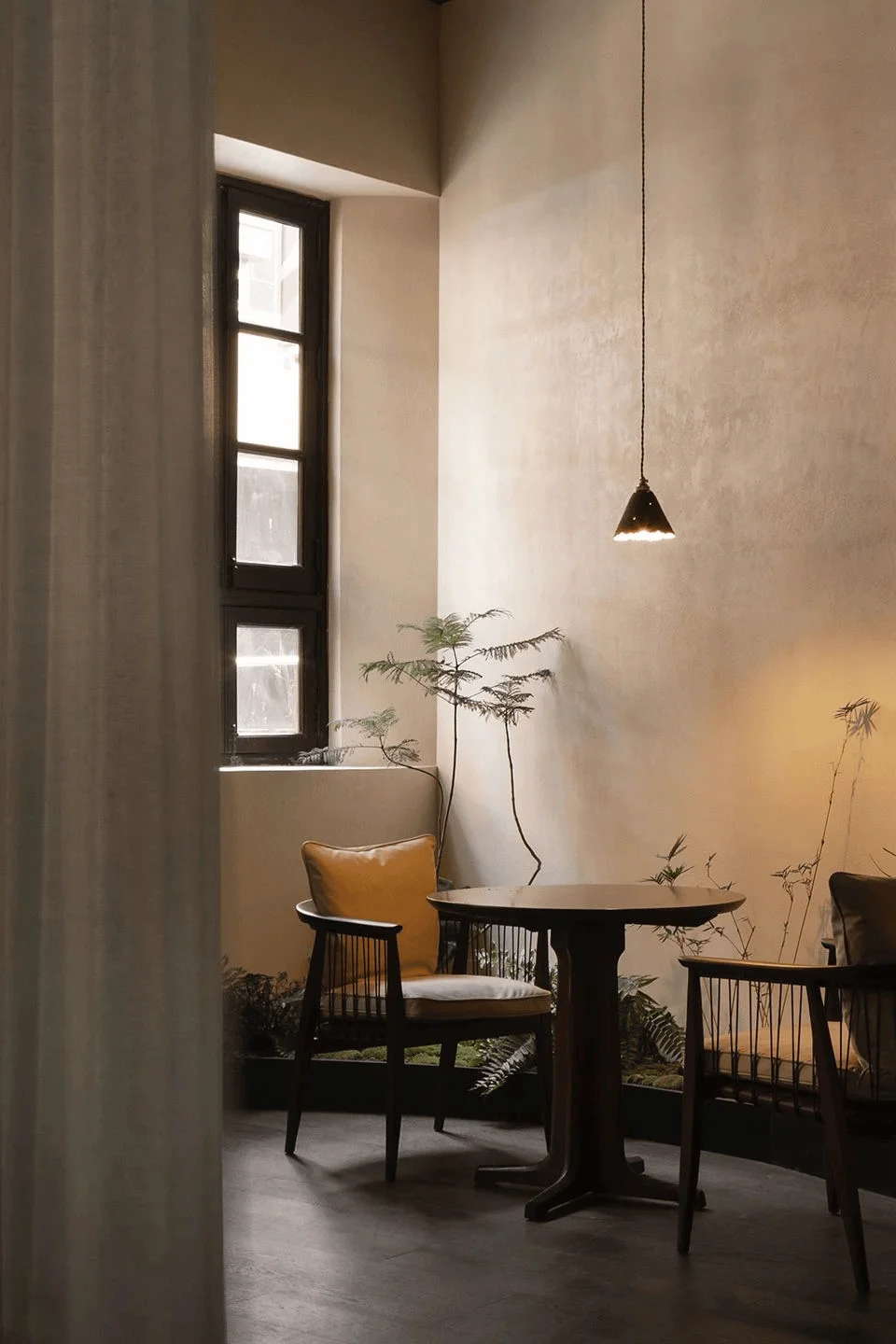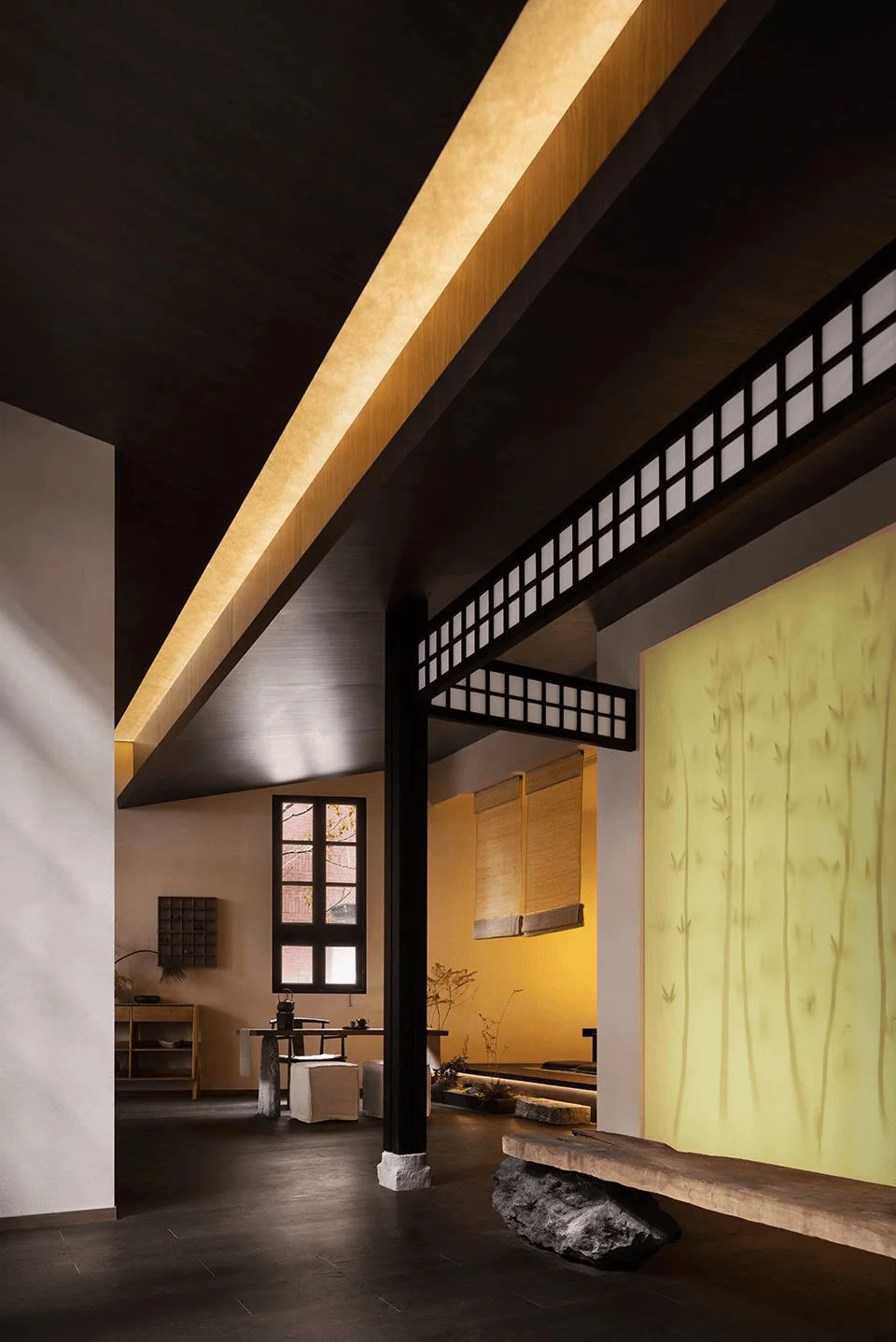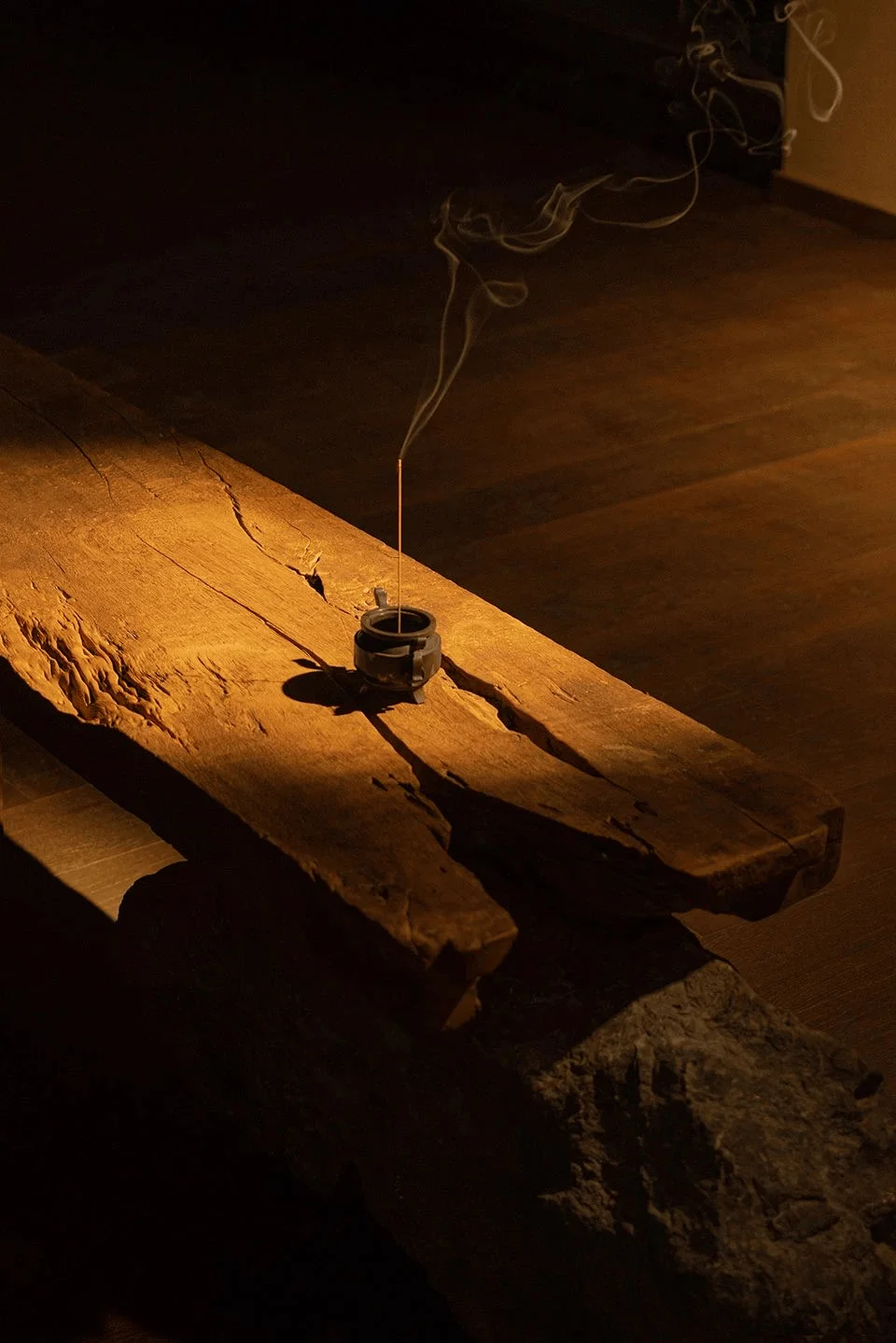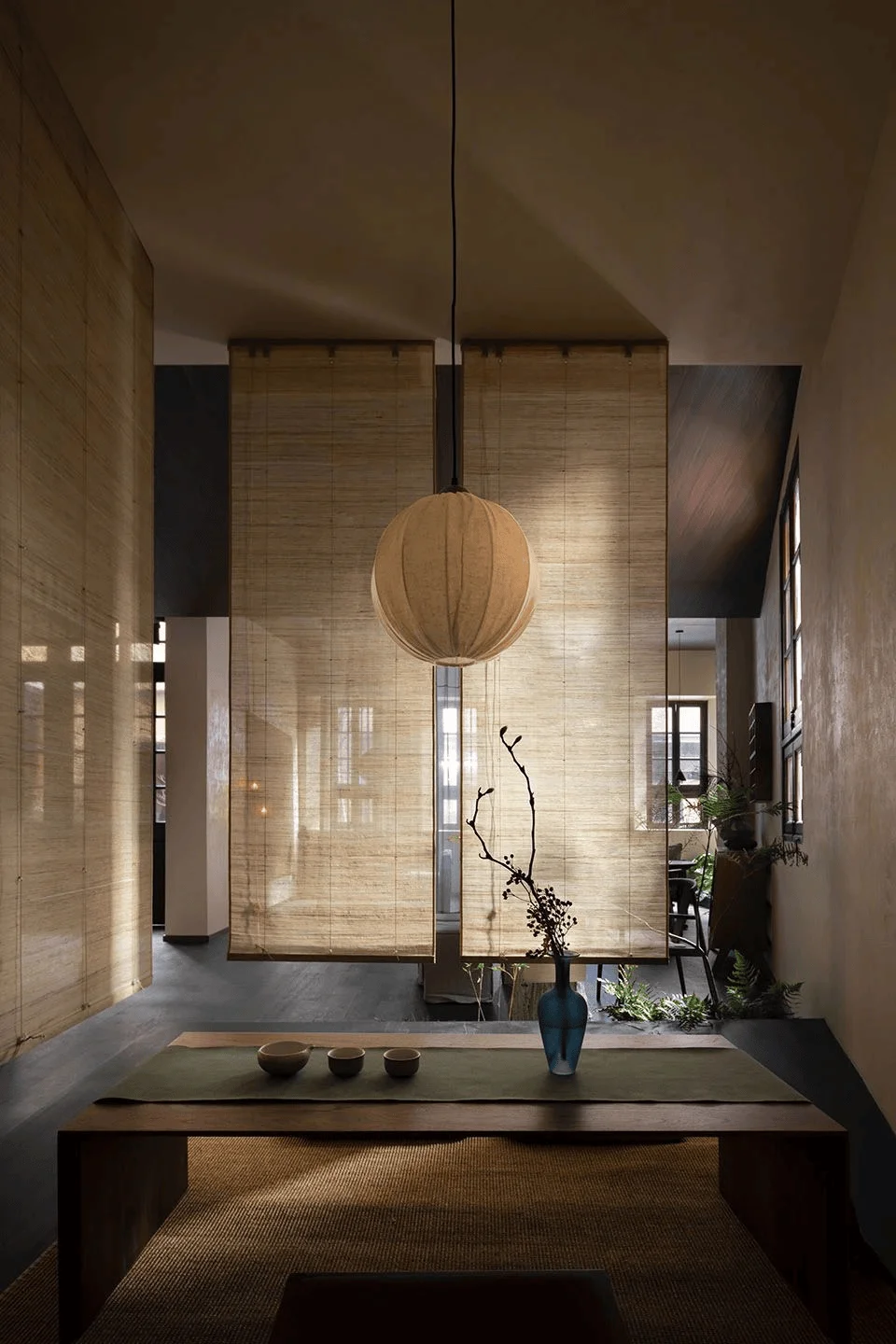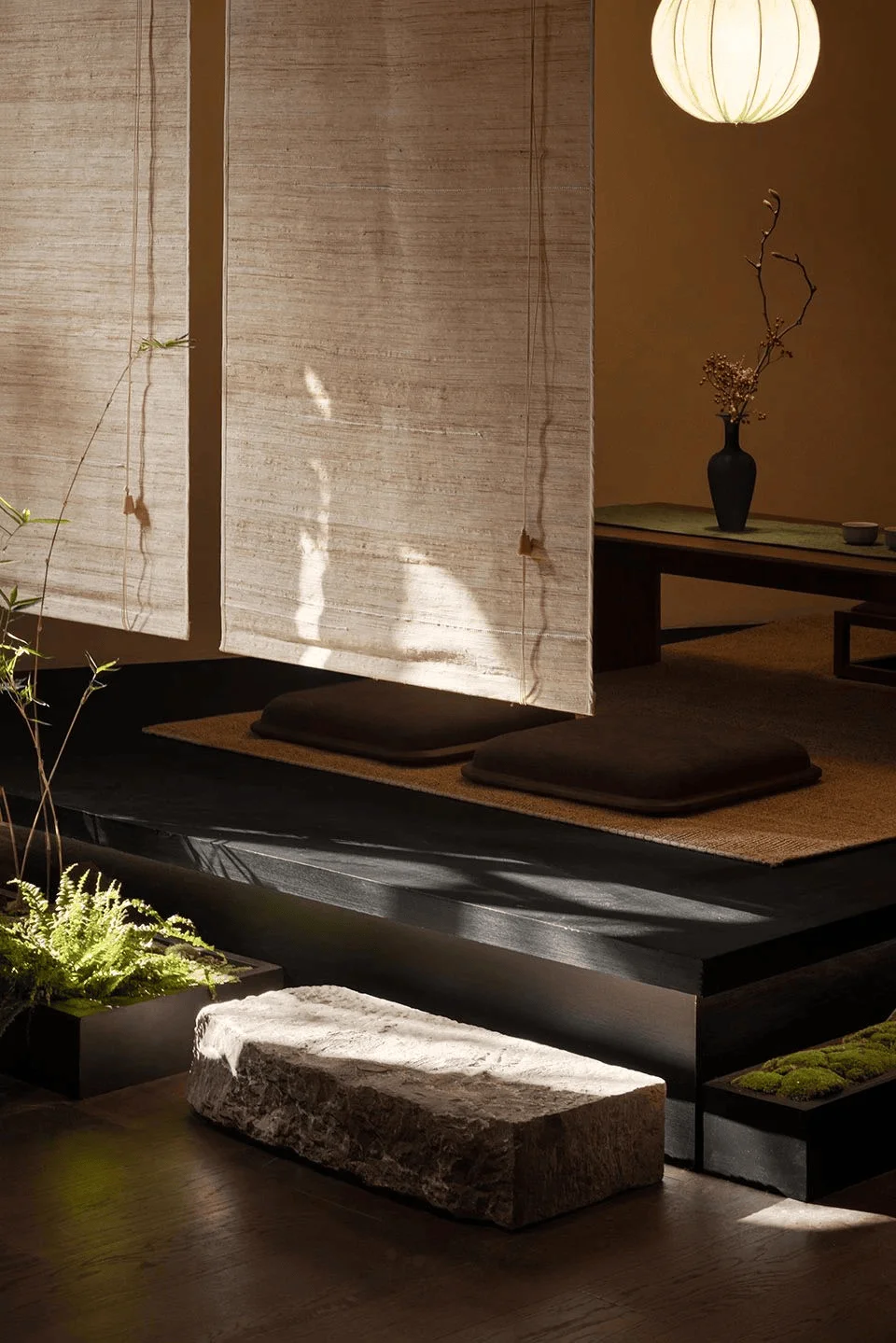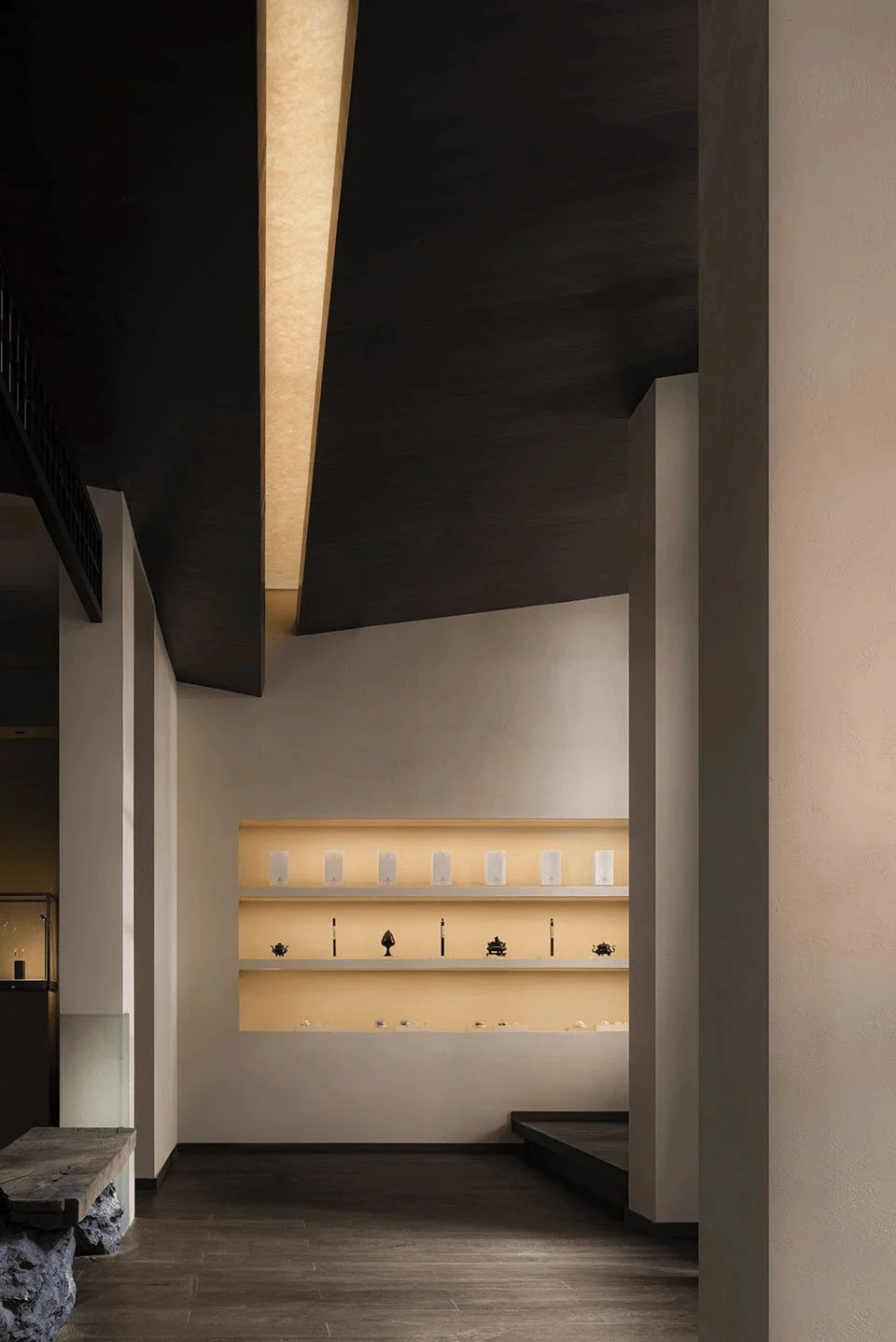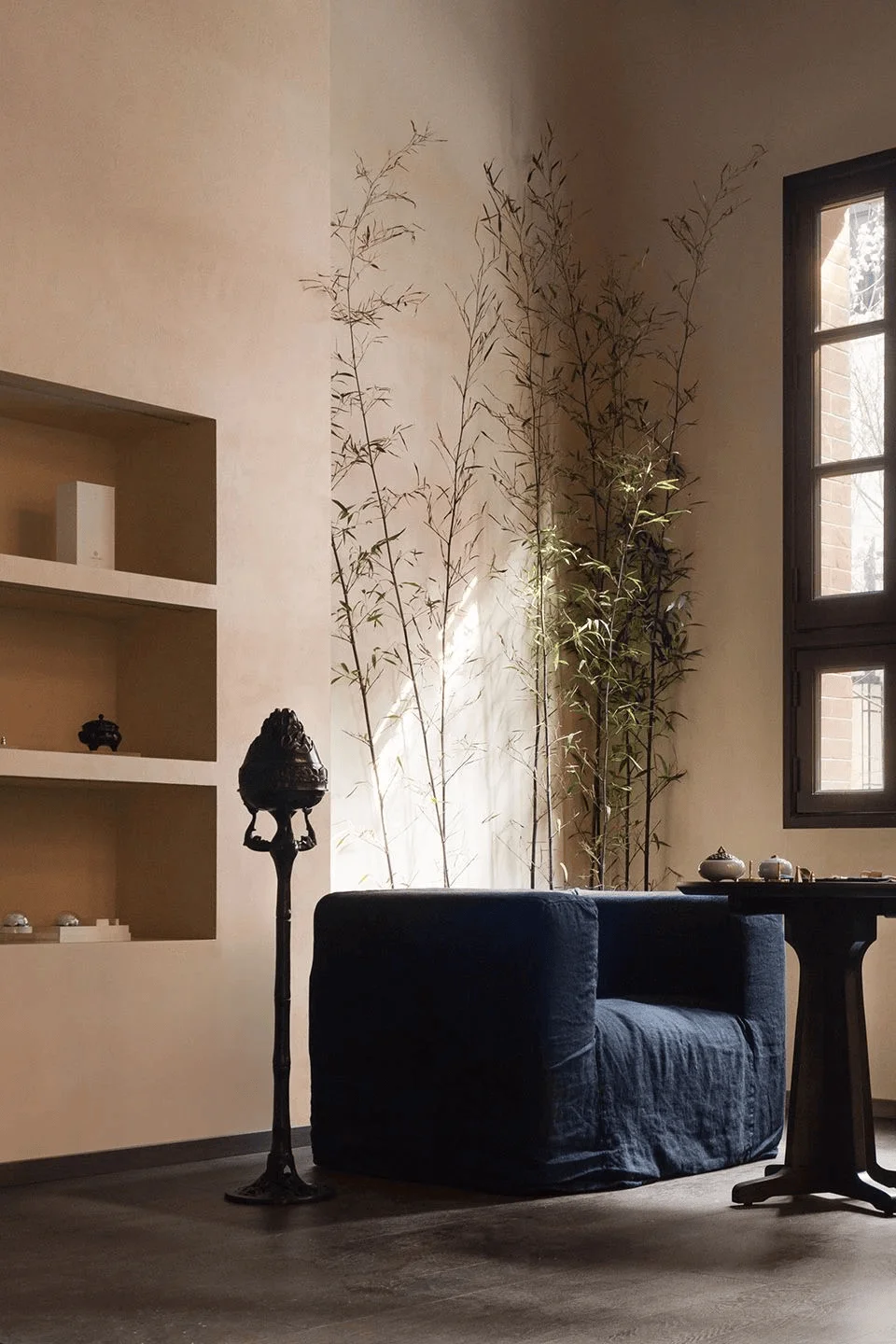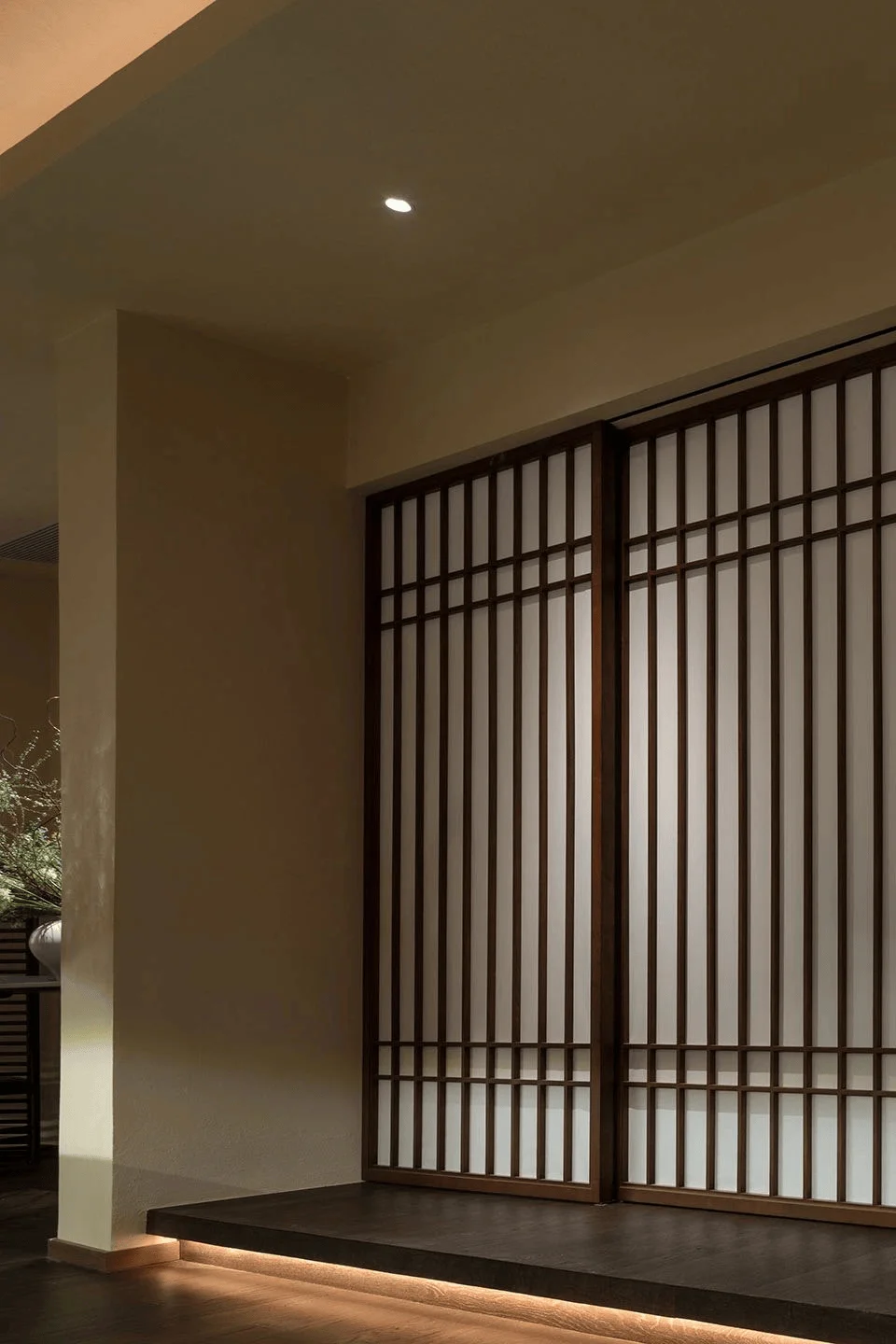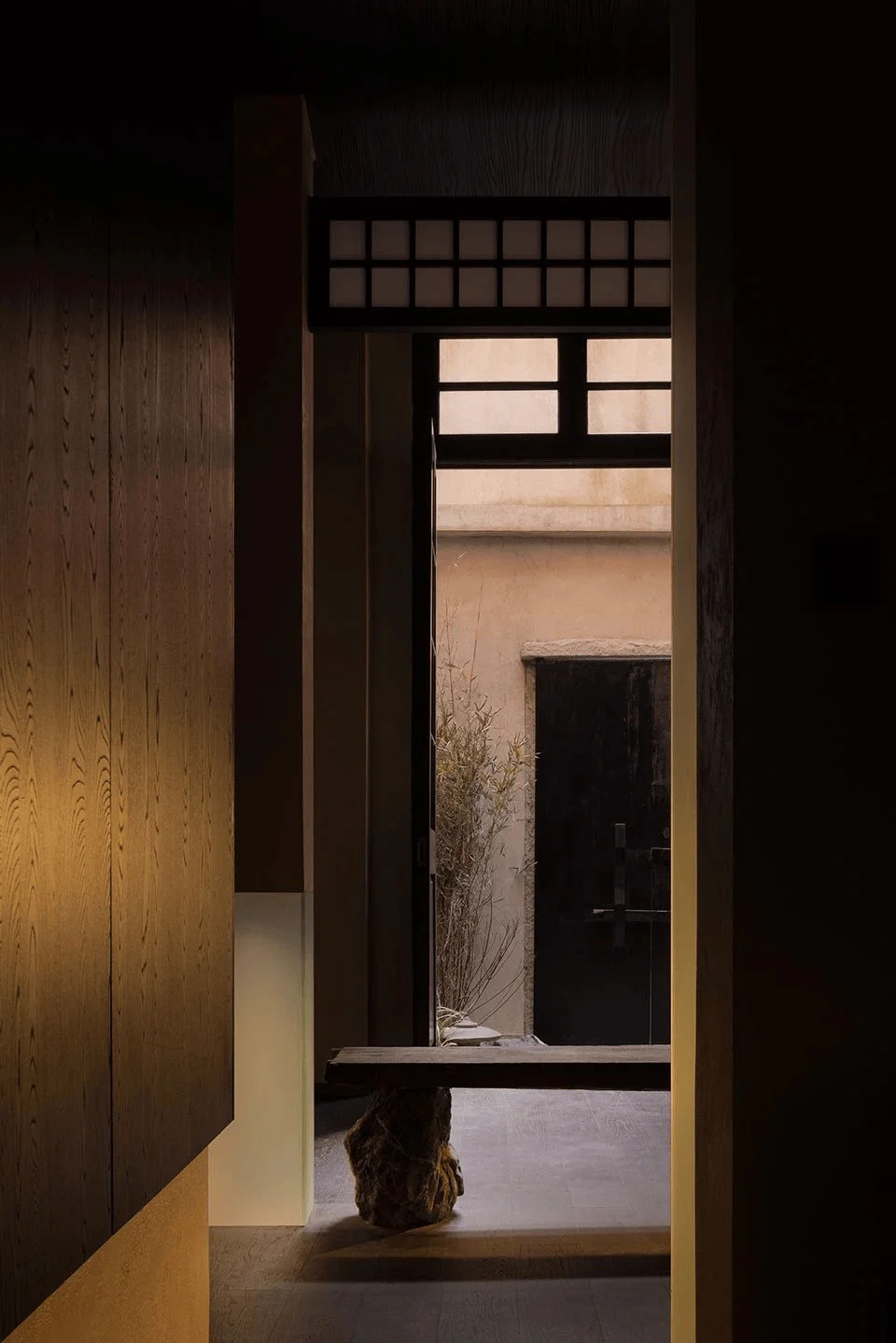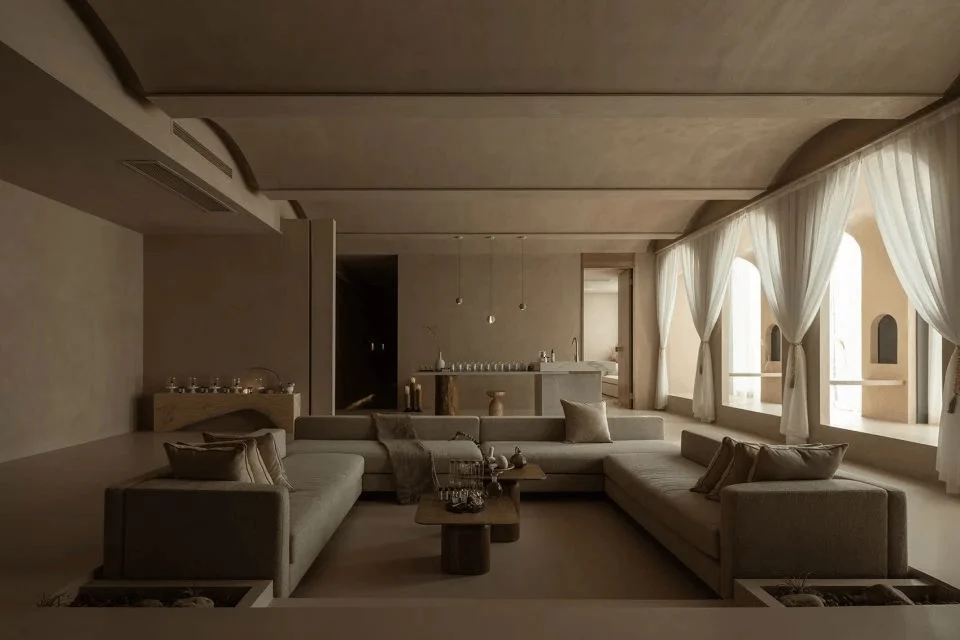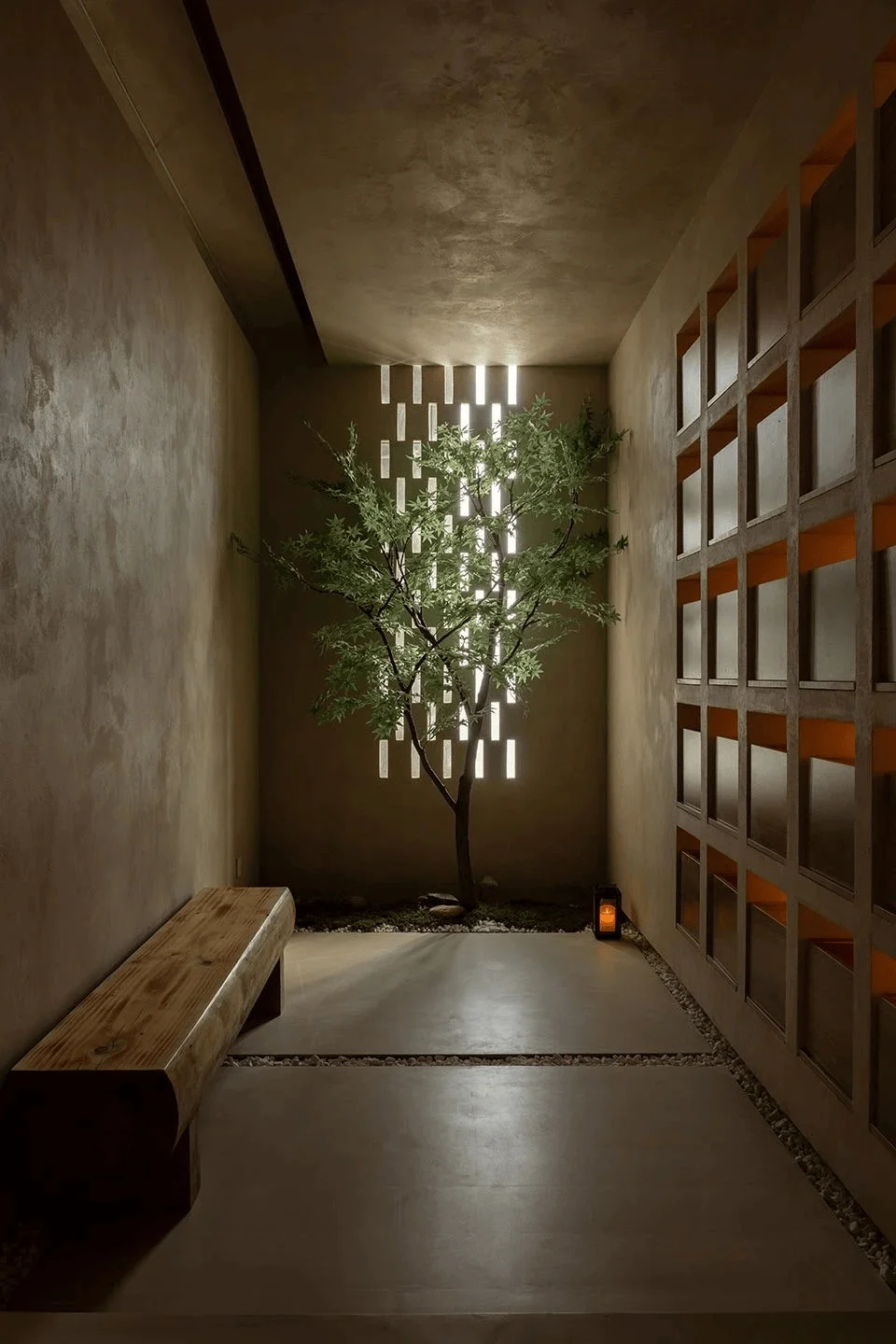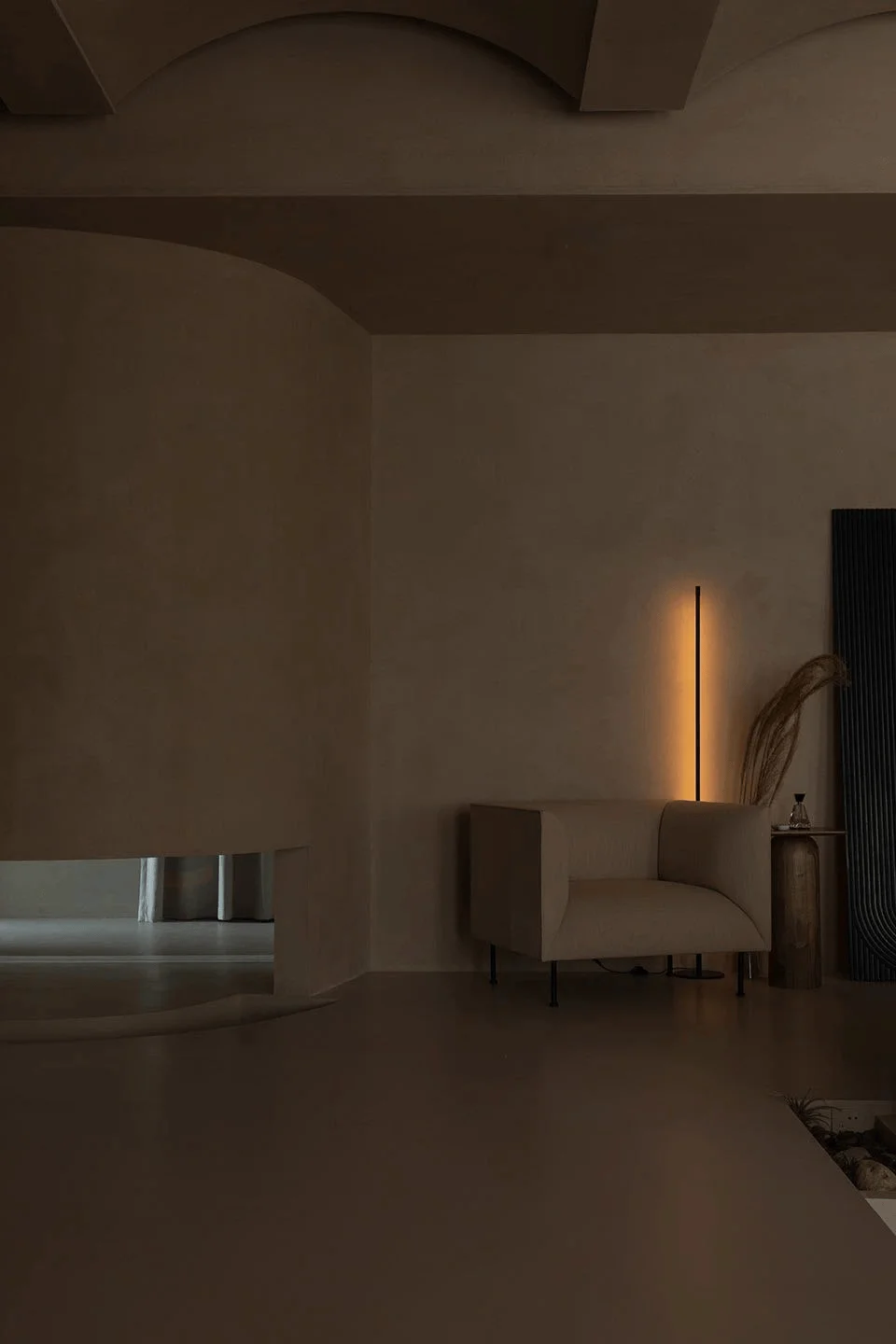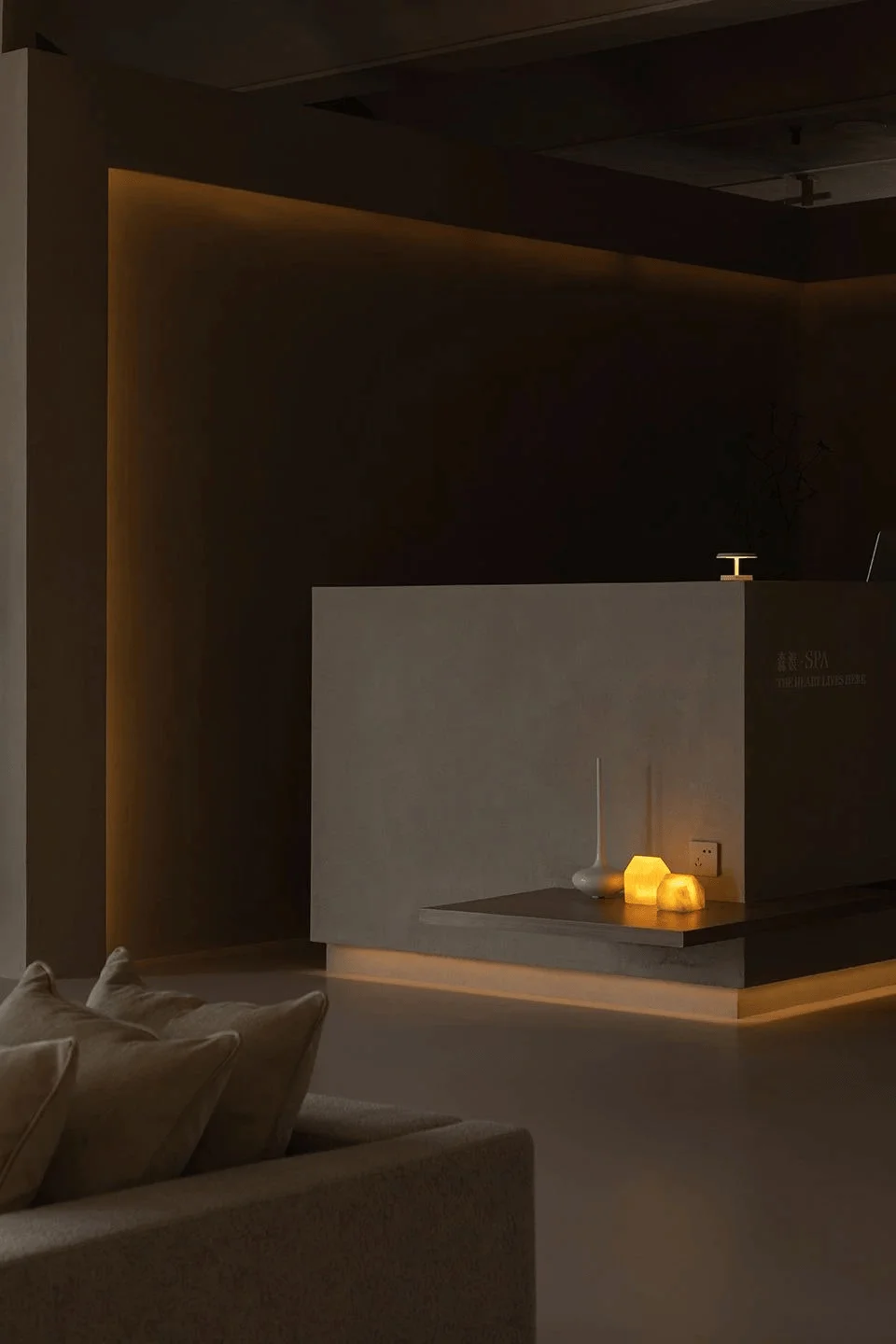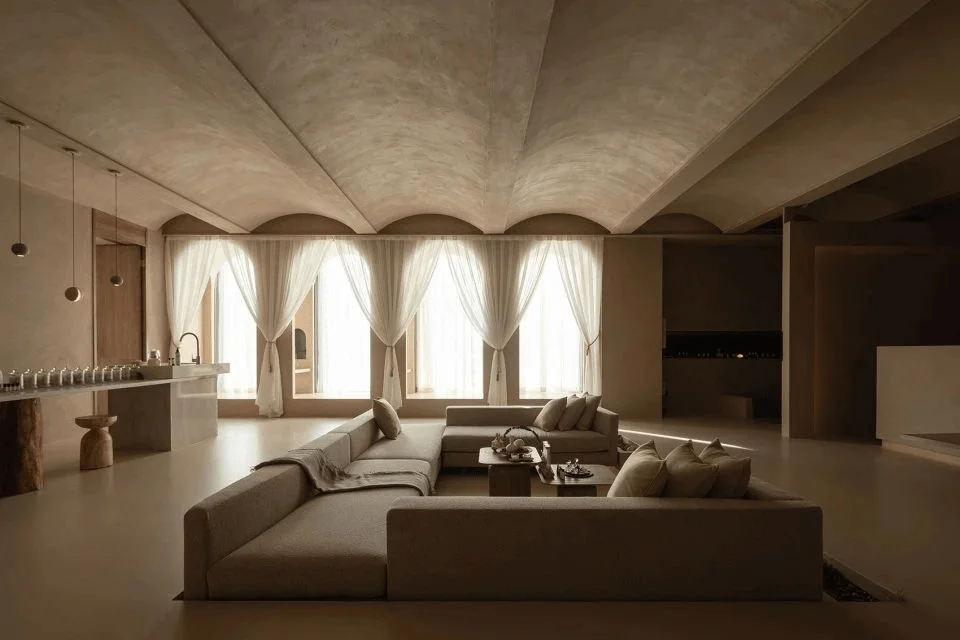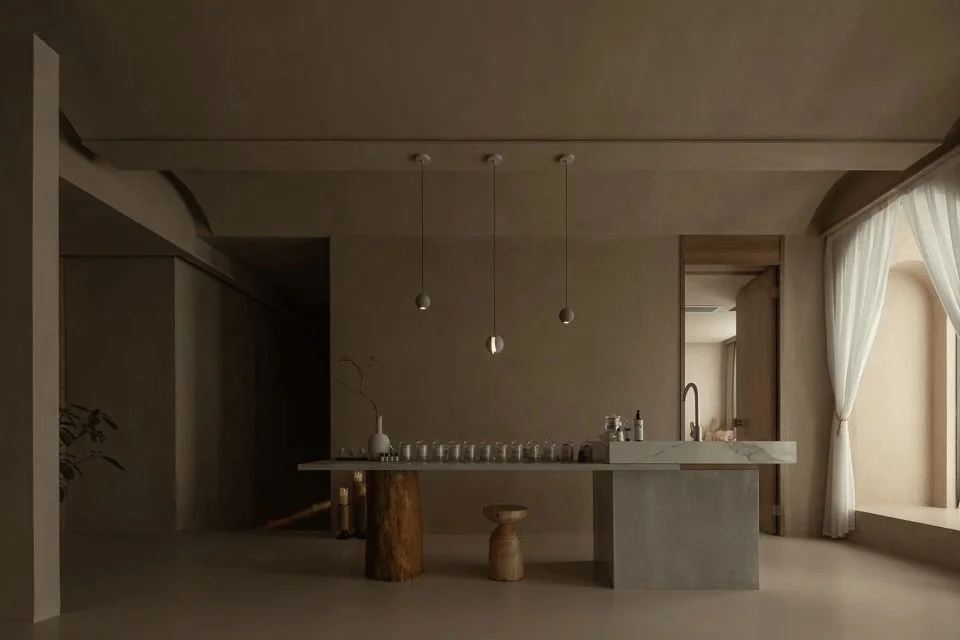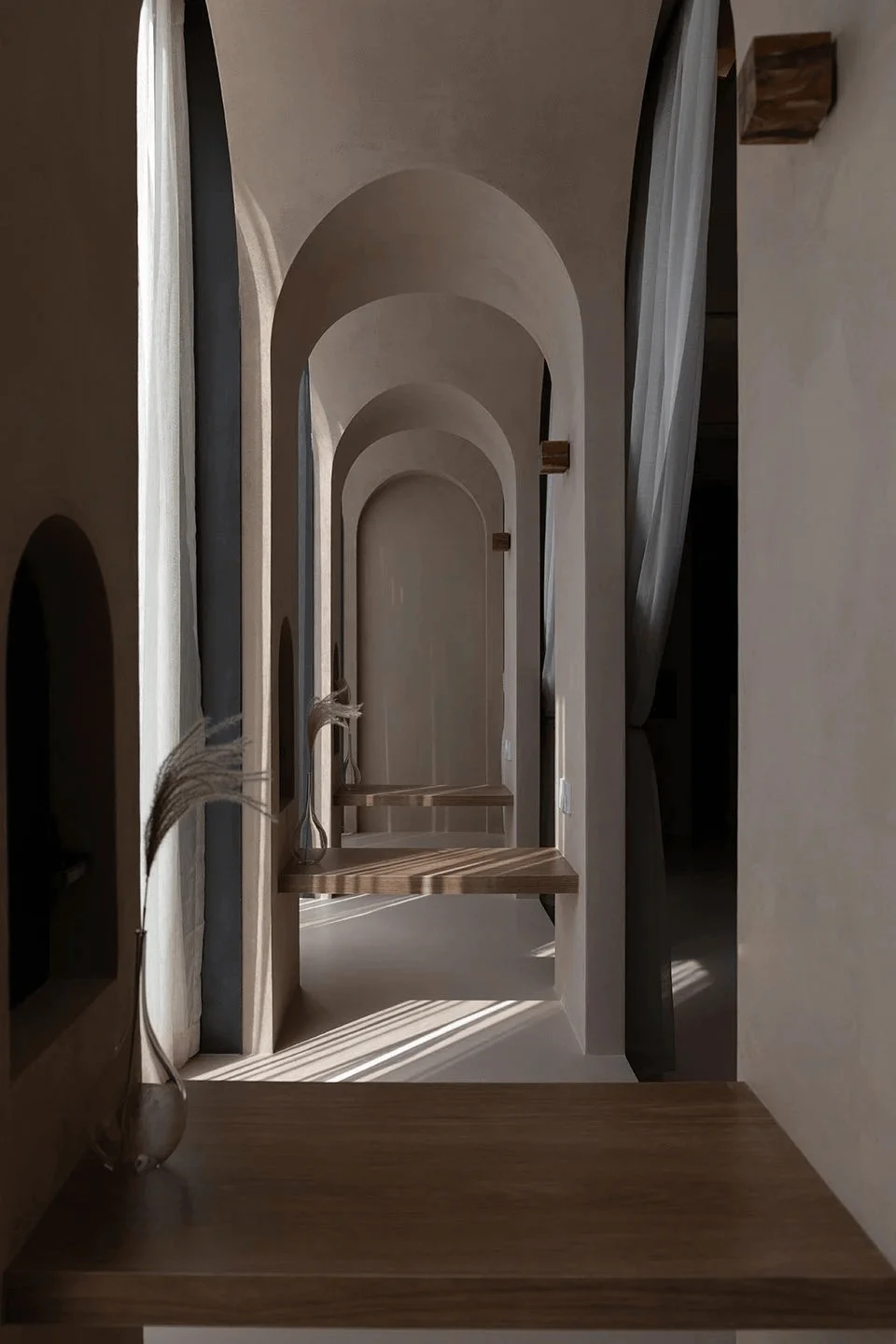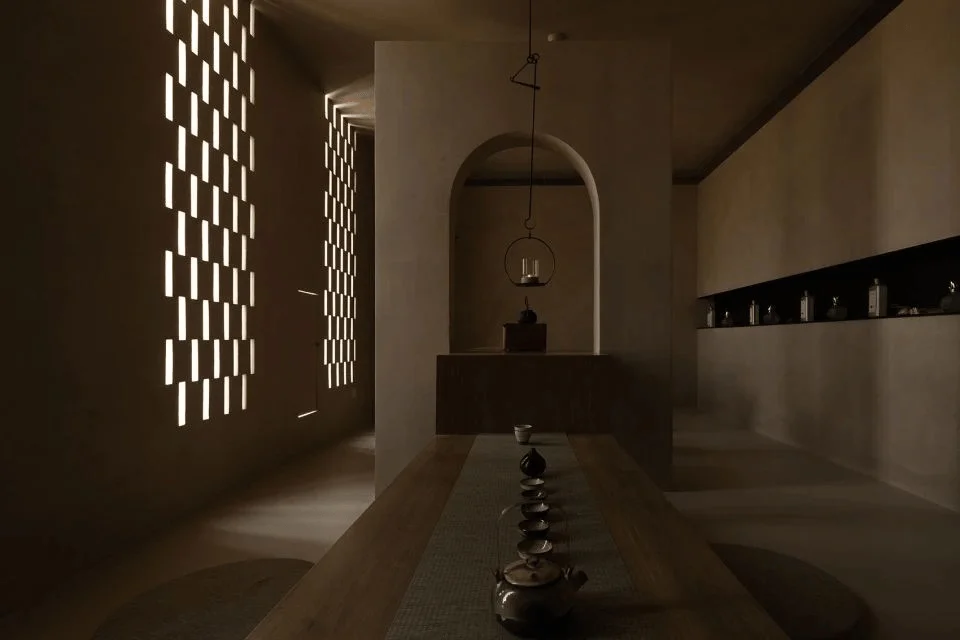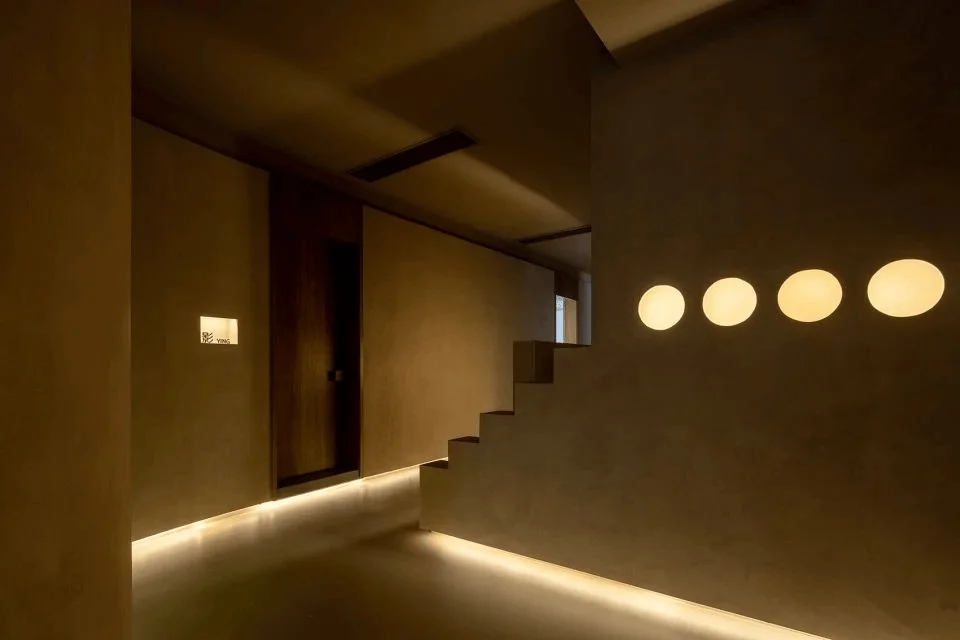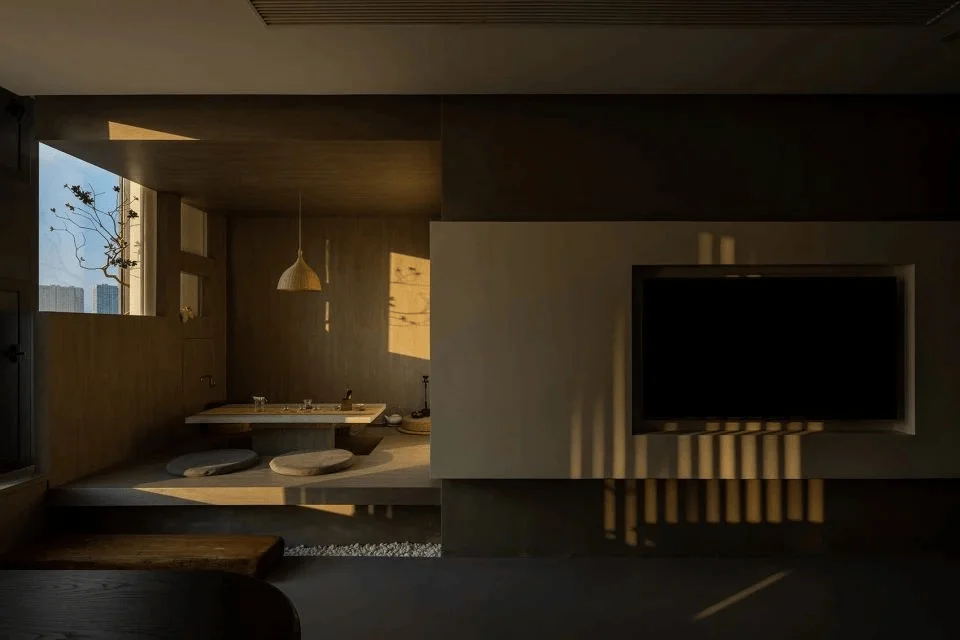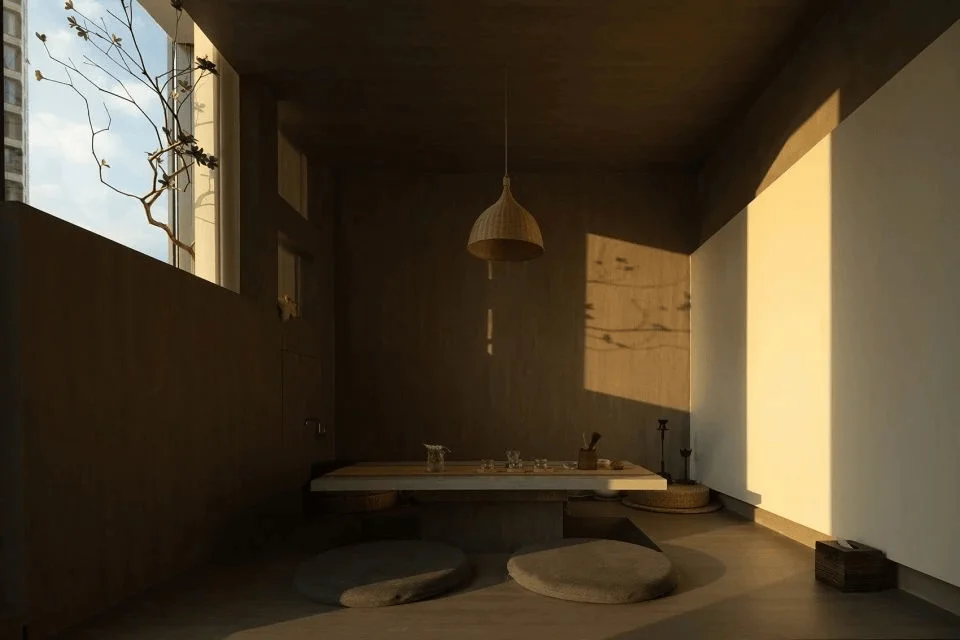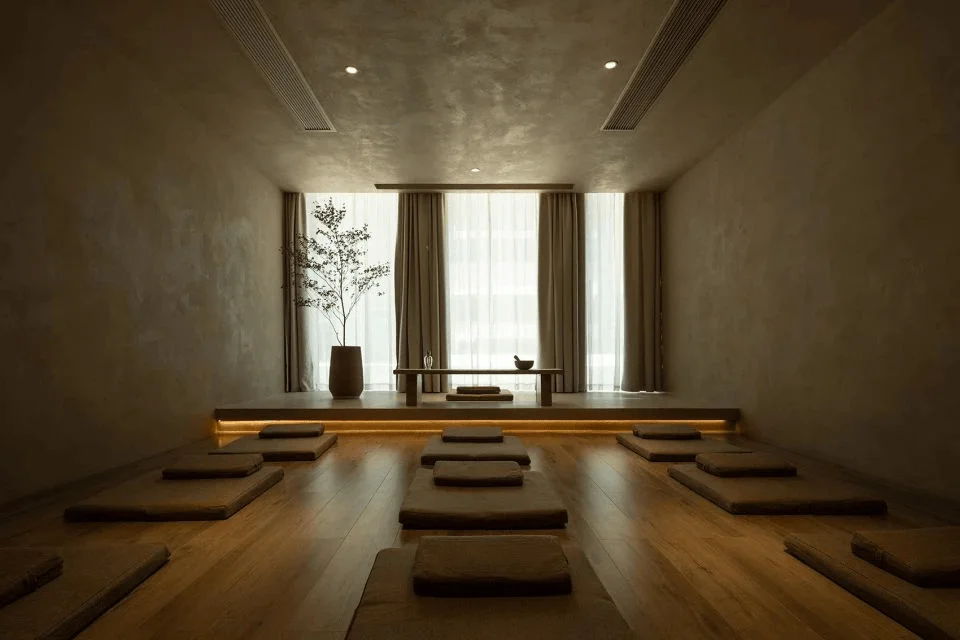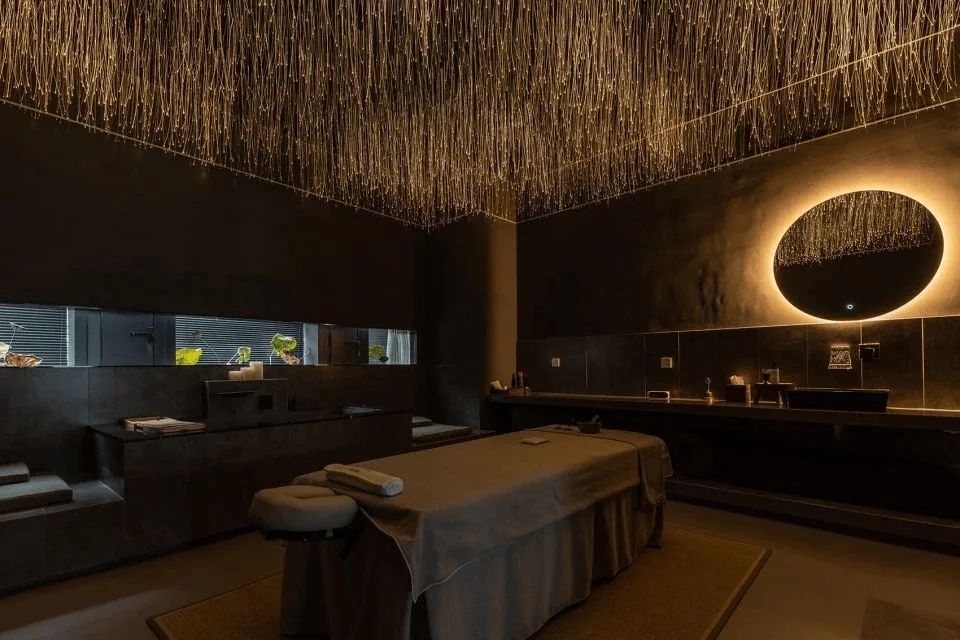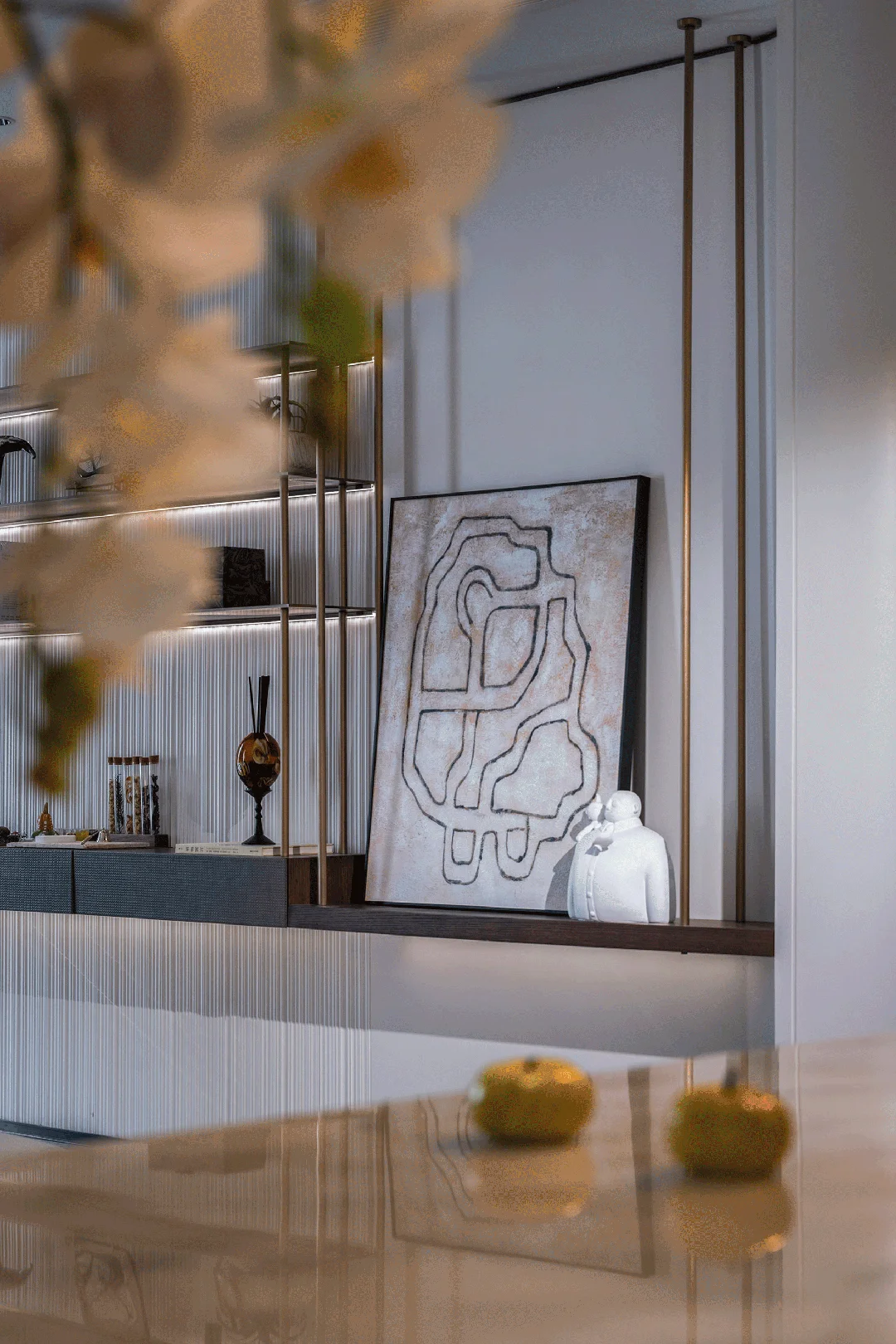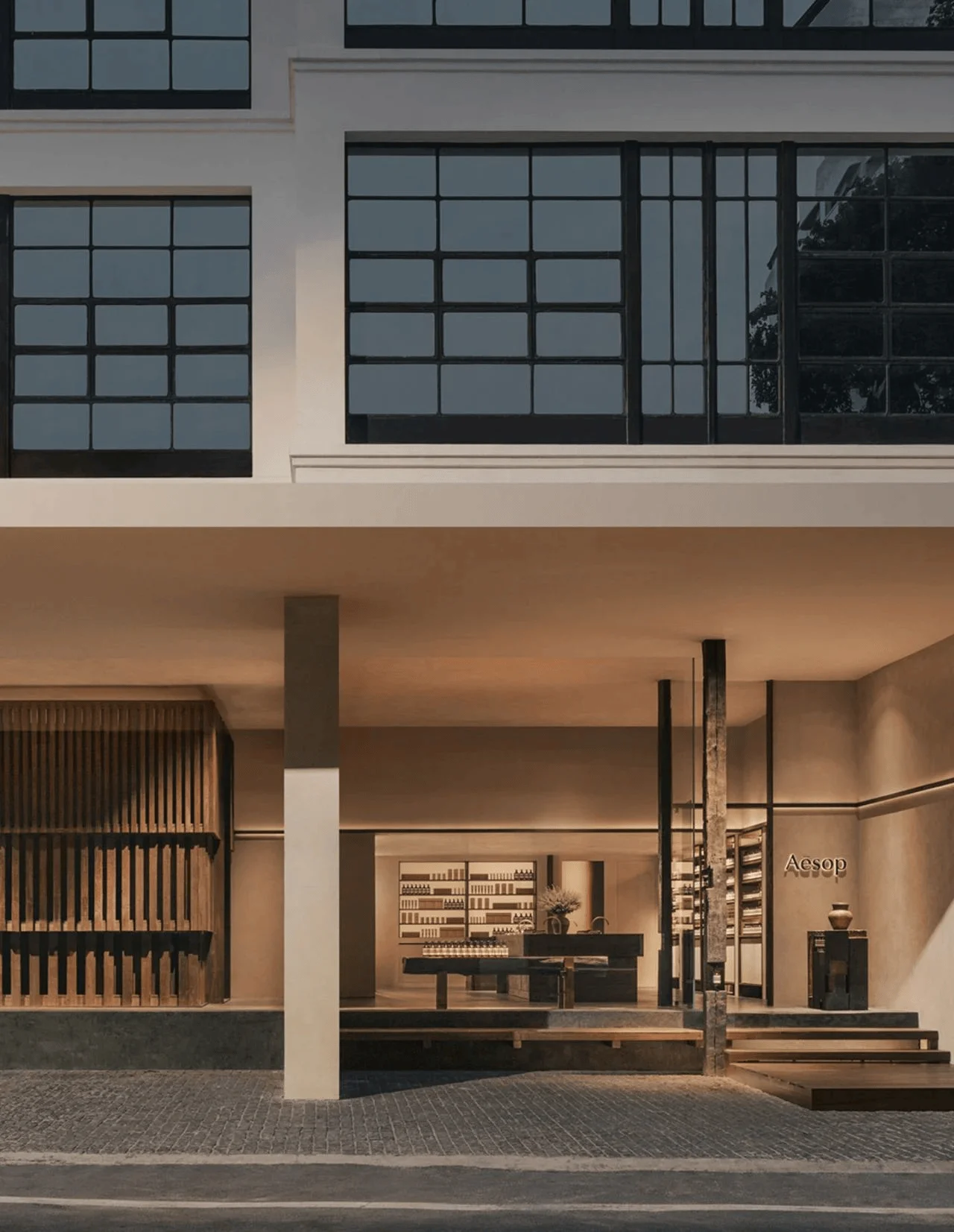Qi Ting SPA in Dongguan uses natural elements and minimalist design to create a relaxing and healing space.
Contents
Project Background: The Pursuit of Relaxation in a Fast-Paced World
In today’s fast-paced modern life, the concept of ‘relaxation’ is increasingly valued. People yearn for freedom and rest, even if only for a brief moment. The Qi Ting SPA, located in Dongguan, China, is a prime example of a space that prioritizes this desire for serenity and wellbeing. LSD, the design firm behind this project, aimed to design a healing spa journey that transcends the hustle and bustle of the city, creating an atmosphere that promotes relaxation and rejuvenation through the interaction of sensory elements. This design emphasizes the integration of nature and architecture, blurring the boundaries between them and fostering a tranquil ambiance to soothe the mind and body. The project is designed for users who seek healing and relaxation within a spa environment, which is a growing trend in the interior design field.
Design Concept and Goals: Embracing the Power of ‘Quiet’ and Sensory Experience
The design concept of Qi Ting SPA hinges on the idea that ‘quiet’ holds immense energy, reflecting principles drawn from Zen philosophy. The designers sought to curate a space that engages all five senses and six perceptions (visual, auditory, tactile, olfactory, gustatory, and intuition). These elements are meticulously incorporated into the design to evoke a sense of calm and well-being. The spa is intended to be a sensory retreat, where users can escape the daily stresses of life and experience a state of profound tranquility. The project highlights the importance of human-centered design and creates an environment that is both aesthetically pleasing and functional within a spa and wellness context. These are critical aspects of contemporary interior design trends.
Functional Layout and Spatial Planning: A Journey through a Cave-Like System
The Qi Ting SPA unfolds as a series of interconnected spaces, designed to feel like a cave system. The exterior and interior are clad in eco-friendly red artificial soft stones, creating a seamless flow. The journey begins in a dark space, where the sound of flowing water immediately envelops visitors. This effect is achieved through the use of water features strategically placed both indoors and outdoors. One water feature acts as a calming stream, while another forms a tranquil pool, further enhancing the relaxing ambiance. The primary facade is replaced with a large glass window, which helps to integrate the outdoor courtyard with the interior. This blurs the boundaries between the indoor and outdoor worlds, providing visitors with a sense of connection with the natural environment and fostering a sense of peace. The building layout and spatial organization of the Qi Ting SPA project showcase a creative approach to spatial design within the spa environment, which contributes to the broader field of architectural design and interior design.
Exterior Design and Aesthetics: Blending Natural and Artificial Materials
The use of natural materials and textures is a central aspect of the Qi Ting SPA’s design. The soft stone exterior and the water features create a serene and welcoming atmosphere. The inclusion of glass windows allows natural light to flood the interior, blurring the boundaries between inside and out. This is a key element of contemporary architectural design, emphasizing a connection with nature and the environment. The design is also minimalist in approach, with few decorative elements. This minimalist style, which is in line with current design trends, creates a sense of calm and allows the spa’s natural features to take center stage. The visual elements contribute to the overall soothing effect of the spa, a key element of healing spa design.
Technical Details and Sustainability: Eco-Friendly Material Selection
The selection of eco-friendly materials, such as the red artificial soft stones used for the exterior and interior, demonstrates a commitment to sustainability. This reflects the increasing awareness of environmental issues within the design community and a growing demand for sustainable and eco-conscious design practices, particularly within the spa and wellness sector. Sustainable architecture and design are becoming more prominent in various fields, and this project exemplifies this trend. The integration of water features also contributes to a sense of tranquility and acts as a reminder of the natural world, reinforcing the spa’s focus on holistic wellbeing. This element is also a notable example of sustainable and biophilic design.
Social and Cultural Impact: Fostering Well-being and Relaxation in a Community Context
The Qi Ting SPA is not just a space for individual relaxation but also a space that contributes to the social and cultural landscape of Dongguan. By creating a sanctuary where people can escape the stresses of modern life and reconnect with themselves and nature, it fosters a sense of community and wellbeing. It demonstrates the crucial role that architectural design can play in enhancing the social fabric and promoting mental and physical health. The project has the potential to influence spa design trends in the region and highlight the importance of incorporating sensory and biophilic elements in creating spaces that promote holistic wellbeing. This has become a critical aspect of design in various fields, not just spas.
Project Information:
Project Type: Spa
Architect: LSD
Area: Not specified
Year: Not specified
Country: China
Main Materials: Red artificial soft stones, glass, wood, water
Photographer: 24designclub


